Seoul is a massive city. It has one of the most populated metropolitan areas in the world. There’s a lot to see and do in Seoul but thankfully, the city has an efficient and extensive metro system that makes sightseeing a breeze.
Like first-time visitors to Tokyo, people who visit Seoul for the first time will have their hands full navigating the city’s myriad attractions so I’ve come up with this 5 day Seoul itinerary to help you maximize your stay.
Like any trip, it’s always better to stay longer but five days will give you enough time to explore Seoul’s top tourist attractions at a moderate, enjoyable pace.
SEOUL ITINERARY QUICK LINKS
To help you plan your trip to Seoul, I’ve compiled links to hotels, tours, and other travel-related services here.
HOTELS
Top-rated hotels in Myeongdong, the best area to stay in Seoul for first-time visitors.
- Luxury: THE PLAZA Seoul, Autograph Collection
- Midrange: Solaria Nishitetsu Hotel Seoul Myeongdong
- Budget: Dream Guesthouse
TOURS
- Seoul Sightseeing Tour: History of Seoul Tour
- Hanbok Rental: Hanbok Rental and Photoshoot Experience
- Day Trip: Nami Island (and More) Day Tour from Seoul
OTHER SERVICES
- Travel Insurance (with COVID cover)
- Airport Transfers
- Korea Tour Card
- Discover Seoul Pass
- South Korea eSIM
SEOUL TRAVEL GUIDE
People visiting South Korea and Seoul for the first time will find our Seoul travel guide very useful. It’ll have all the information you need – like when to go, how to get around, what and where to eat, etc. – to help you plan your trip.
Save This on Pinterest!
No time to read this 5 day Seoul itinerary now? Click on the save button and pin it for later!
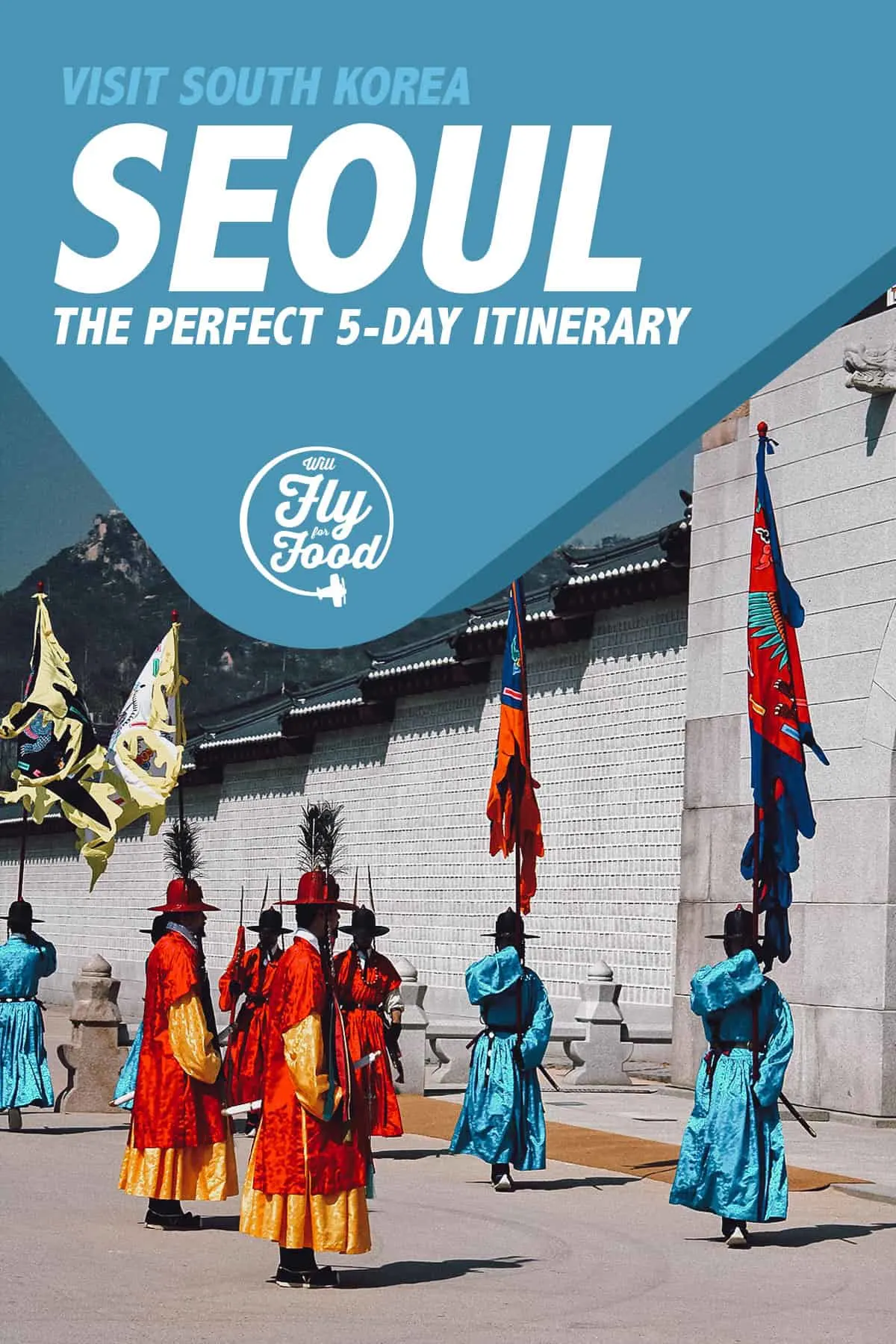
WHAT TO DO WITH 5 DAYS IN SEOUL
Listed below are the top Seoul attractions along with a few recommended restaurants. You can jump to the location map to see exactly where they are in the city.
We highly recommend getting a Korea Tourist Card or Discover Seoul Pass. Either one will be very helpful to you as you hop from one attraction to the next on this Seoul Itinerary. The Discover Seoul Pass is especially helpful because it gives you free admission to many of the attractions recommended here. You can click on the links for more information.
NOTE: We usually use Google Maps to navigate but it doesn’t work as well in Korea. In Seoul, it’s best to navigate using the NAVER Map, Navigation app (iOS | Android).
SEOUL ITINERARY QUICK GLANCE
| DAY ONE • Gyeongbokgung Palace / Gwanghwamun Gate • Tosokchon (lunch) • Bukchon Hanok Village • Changdeokgung Palace / Huwon • Changgyeonggung Palace • Jongmyo Shrine • Ikseondong Hanok Village • Insadong Area • Jogyesa Temple • Imun Seolleongtang (dinner) |
| DAY TWO • Gyeonghuigung Palace • Deoksugung Palace • Jeonju Yuhalmeoni Bibimbap (lunch) • Namdaemun Market • N Seoul Tower • Myeongdong Area • Myeongdong Kyoja (dinner) |
| DAY THREE • Noryangjin Fish Market • Hongdae Area • Gangnam Area • BBQ Olive Chicken Cafe (lunch) • Bongeunsa Temple • COEX Mall • Starfield Library • Gangnam Shopping Street • Wonjo Masan Halmae Agujjim (dinner) |
| DAY FOUR • Cheonggyecheon Stream • Gwangjang Market • Woo Lae Oak (lunch) • Ihwa Mural Village • Dongdaemun Design Plaza • Itaewon Area • Sigol Bapsang (appetizer) • Woosung Galbi (dinner) |
| DAY FIVE • Day Trip |
SEOUL ITINERARY: DAY 1
Gyeongbokgung Palace
Your first stop on day one of this Seoul itinerary is Gyeongbokgung, the oldest and largest among Seoul’s Five Grand Palaces. Built in 1395, it served as the main palace of the Joseon Dynasty and currently houses the National Palace Museum of Korea and the National Folk Museum of Korea.
Gyeongbokgung is the biggest palace in Seoul and considered by many to be the most beautiful so it makes sense to go there first. Pictured below is Gwanghwamun Gate. It’s the main gate to the palace and where you can watch the changing of the Royal Guard.
Entrance to Gyeongbokgung is KRW 3,000 but you can get an integrated palace ticket for KRW 10,000 that gives you access to Gyeongbokgung, Changdeokgung (including Huwon), Changgyeonggung, Deoksugung, and Jongmyo Shrine.
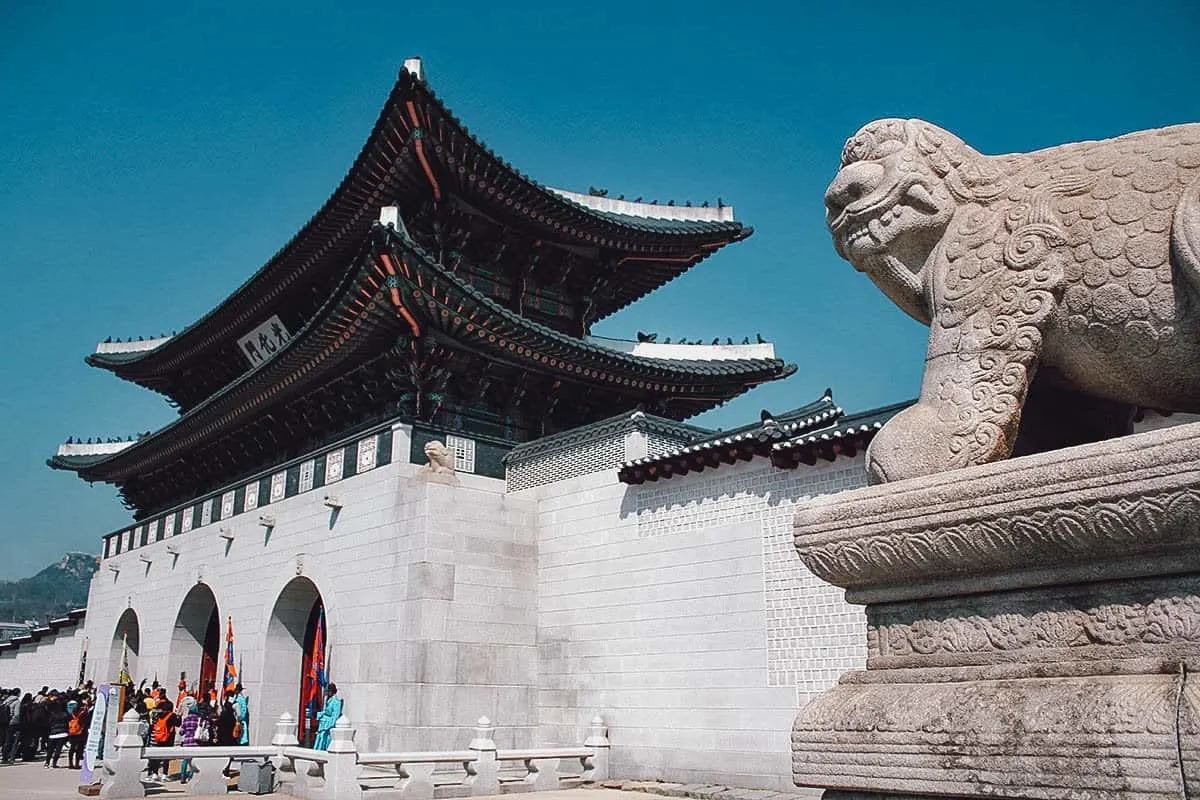
You can witness the ceremonial changing of the Royal Guard at Gwanghwamun Gate at 10AM and 2PM everyday except Tuesday. It’s one of the most interesting times to visit Gyeongbokgung so it’s best to arrive before 10AM. Other than Gyeongbokgung, the only other palace where you can watch the changing of the guard in Seoul is at Deoksugung.
We visited Gyeongbokgung on our own but if you’d prefer to go on a guided tour, then there are a few palace tours you can choose from on Klook or Get Your Guide. Many tourists who visit Gyeongbokgung will rent a hanbok (traditional Korean dress) first for more memorable pictures.
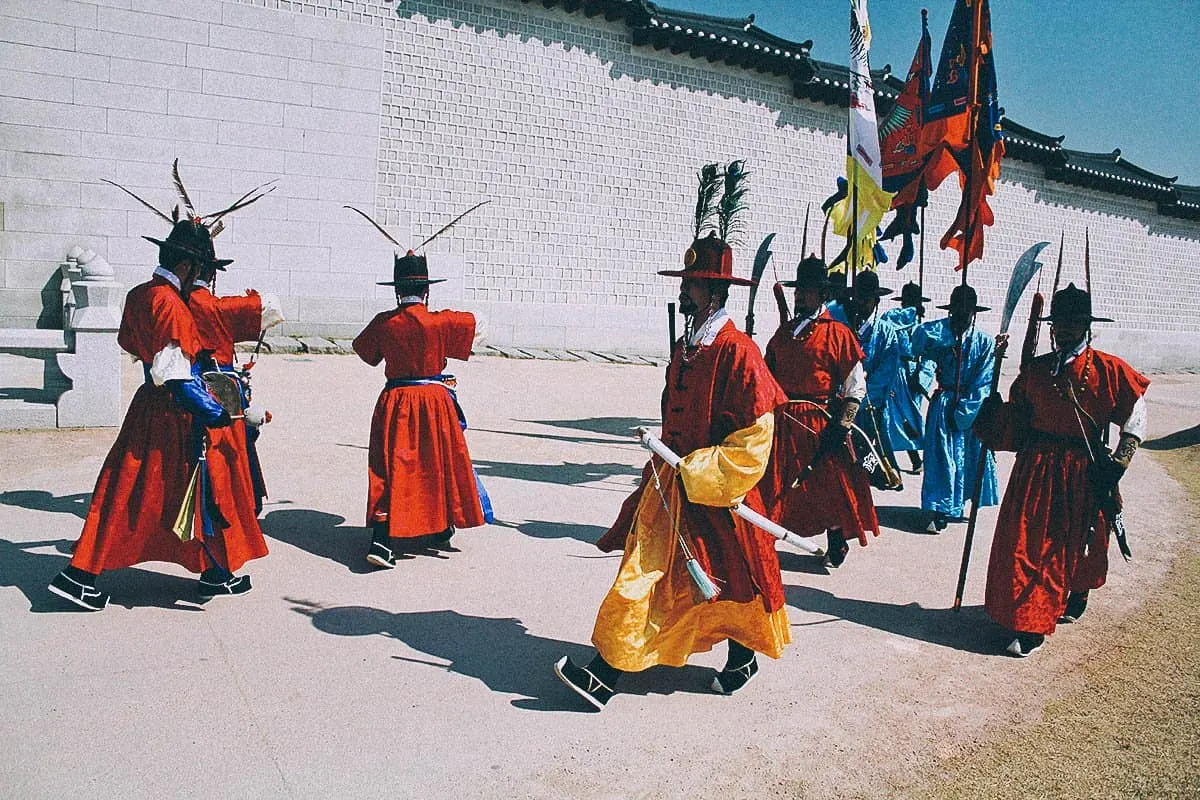
Operating Hours: 9AM-6PM, Wed-Mon (closed Tuesdays)
Admission: KRW 3,000
Closest Subway Station: Gyeongbokgung Station (Line 3, Exit 5) or Anguk Station (Line 3, Exit 1)
Estimated Time to Spend: About 1-2 hrs
Tosokchon
After exploring Gyeongbokgung, head over to Tosokchon for lunch. It’s about a 5-minute walk west of the palace. Tosokchon has been open for over 30 years and is known for serving some of the best samgyetang in Seoul.
Samgyetang is a hearty Korean soup dish made from a whole young chicken stuffed with glutinous rice and boiled in a broth of Korean ginseng, jujube fruits, garlic, ginger, and other ingredients. It’s believed to have a cooling effect on the body and is thus especially popular in summer.
We’ve tried many delicious dishes in Korea and samgyetang is definitely one of the most interesting. Pictured below is a version of the dish made with black chicken.
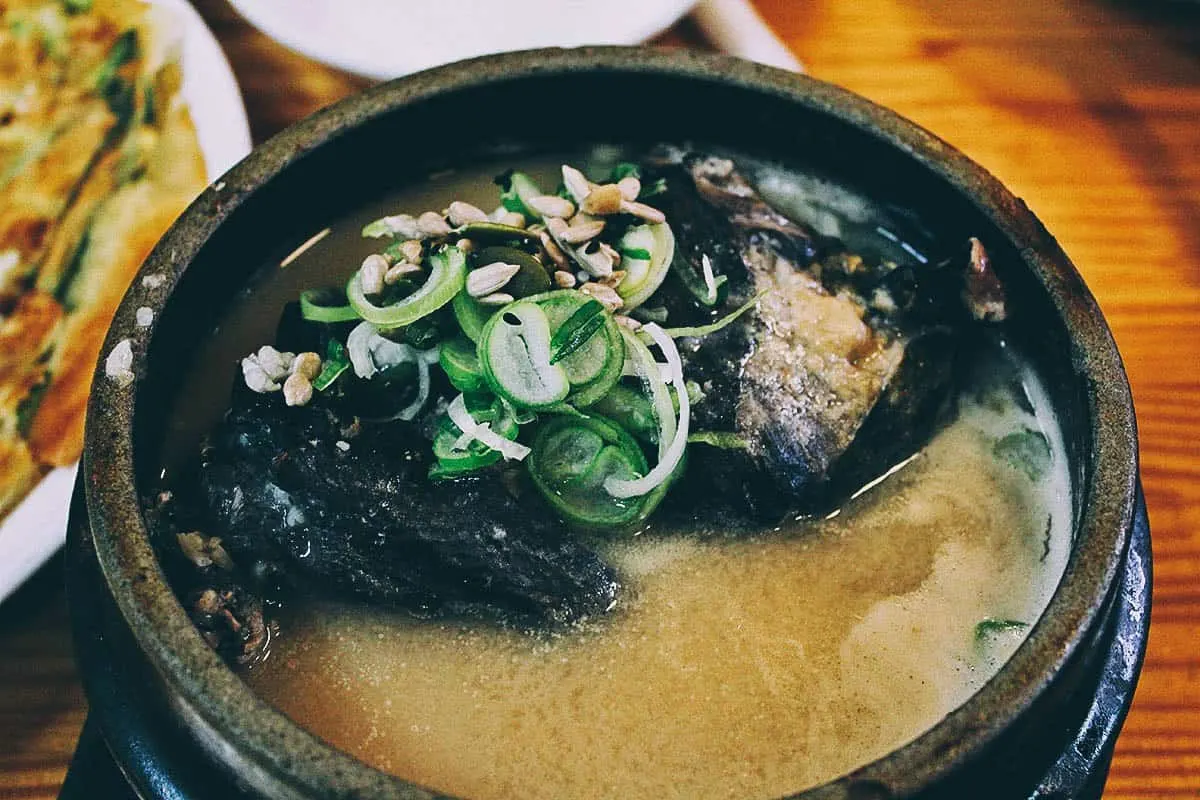
Address: 5 Jahamun-ro 5-gil, Sajik-dong, Jongno-gu, 서울특별시 South Korea
Operating Hours: 10AM-10PM, daily
Closest Subway Station: Gyeongbokgung Station (Exit 2)
What to Order: Samgyetang
What We Paid: Around KRW 15,000-20,000 per person
Bukchon Hanok Village
Bukchon Hanok Village is an atmospheric residential/commercial neighborhood in Seoul located between Gyeongbokgung and Changdeokgung palaces. After lunch at Tosokchon, make your way there before proceeding to Changdeokgung.
Bukchon Hanok Village is home to hundreds of hanoks or traditional Korean houses that date back to the Joseon Dynasty. It’s one of the most popular places in Seoul to rent a hanbok for pictures.
While many of the hanoks have been converted into cultural centers and teahouses, the majority are still residences so it’s important to be respectful and keep your voices down when you visit.
I’ve visited Bukchon Hanok Village a few times, always on my own, but there’s a free walking tour you may want to join. You can visit on a guided tour as well.
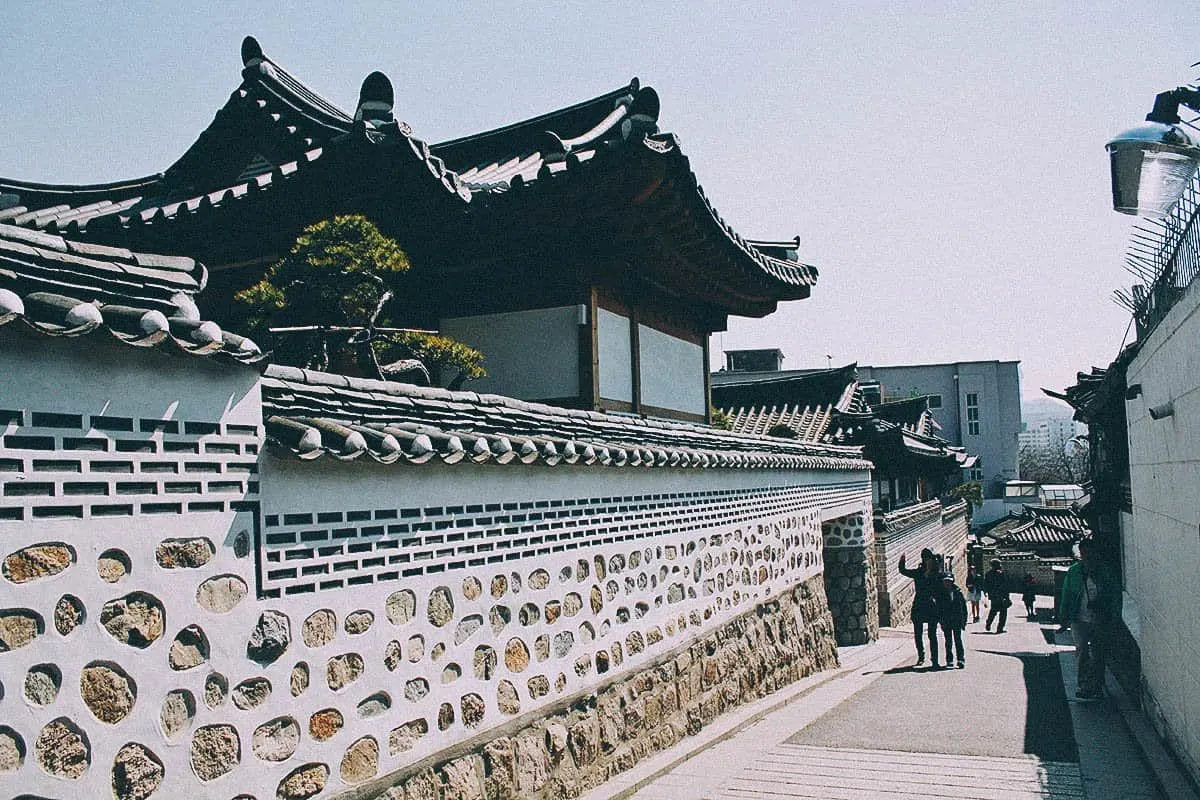
Closest Subway Station: Anguk Station (Line 3, Exit 1 or 2)
Estimated Time to Spend: About 1 – 1.5 hrs
Changdeokgung Palace
From Bukchon Hanok Village, it’s about a 10-15 minute walk east to Changdeokgung Palace. It’s the second of the Five Grand Palaces you’ll be visiting on this 5 day Seoul itinerary.
Changdeokgung was the second royal villa built in Seoul, after Gyeongbokgung. It’s perhaps the most well-preserved of the five palaces and one of the most visited. If you were to visit just two palaces, then it should probably be Gyeongbokgung and Changdeokgung.
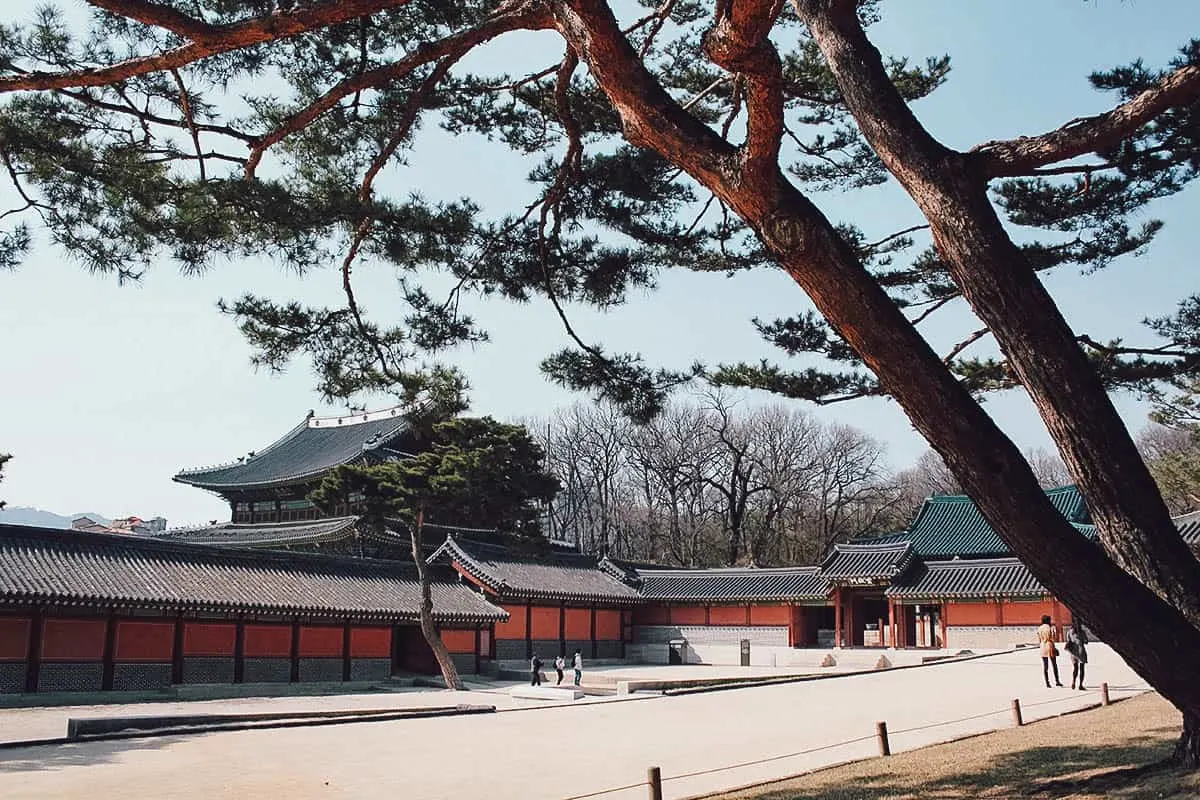
One of Changdeokgung’s most notable features is the rear secret garden or Huwon. It was used as a resting place by the Joseon kings and considered one of the best examples of Korean garden design. It features a small pond, a pavilion, and a large tree that’s over 300 years old.
Admission to the Huwon is separate from the palace but the integrated palace ticket will give you access to both. Like Gyeongbokgung and Bukchon Hanok Village, Changdeokgung is a great place to rent a hanbok for pictures. You can also visit on a guided tour.
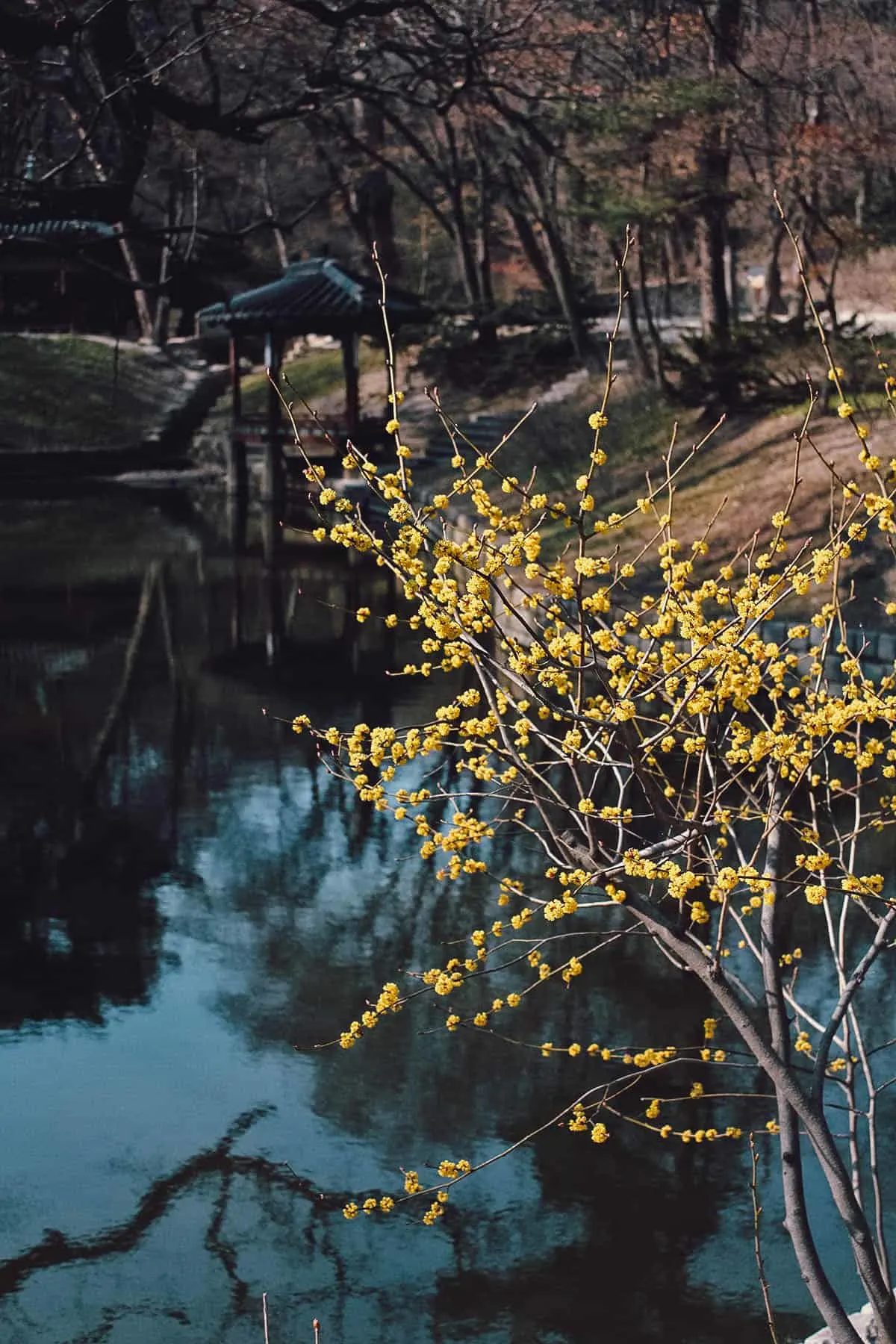
Operating Hours: 9AM-6PM, Tue-Sun (closed Mondays)
Admission: KRW 3,000 (palace), KRW 8,000 (Huwon)
Closest Subway Station: Anguk Station (Line 3, Exit 3)
Estimated Time to Spend: About 2 hrs
Changgyeonggung Palace
Connected to Changdeokgung is Changgyeonggung, the next of the Five Grand Palaces in Seoul. It was built in 1483 for the wives of the Joseon kings.
Changgyeonggung Palace is smaller and less impressive than the previous two but its proximity to Changdeokgung makes it a worthwhile stop on this Seoul itinerary. Plus, you’ll have free access with the integrated palace ticket.
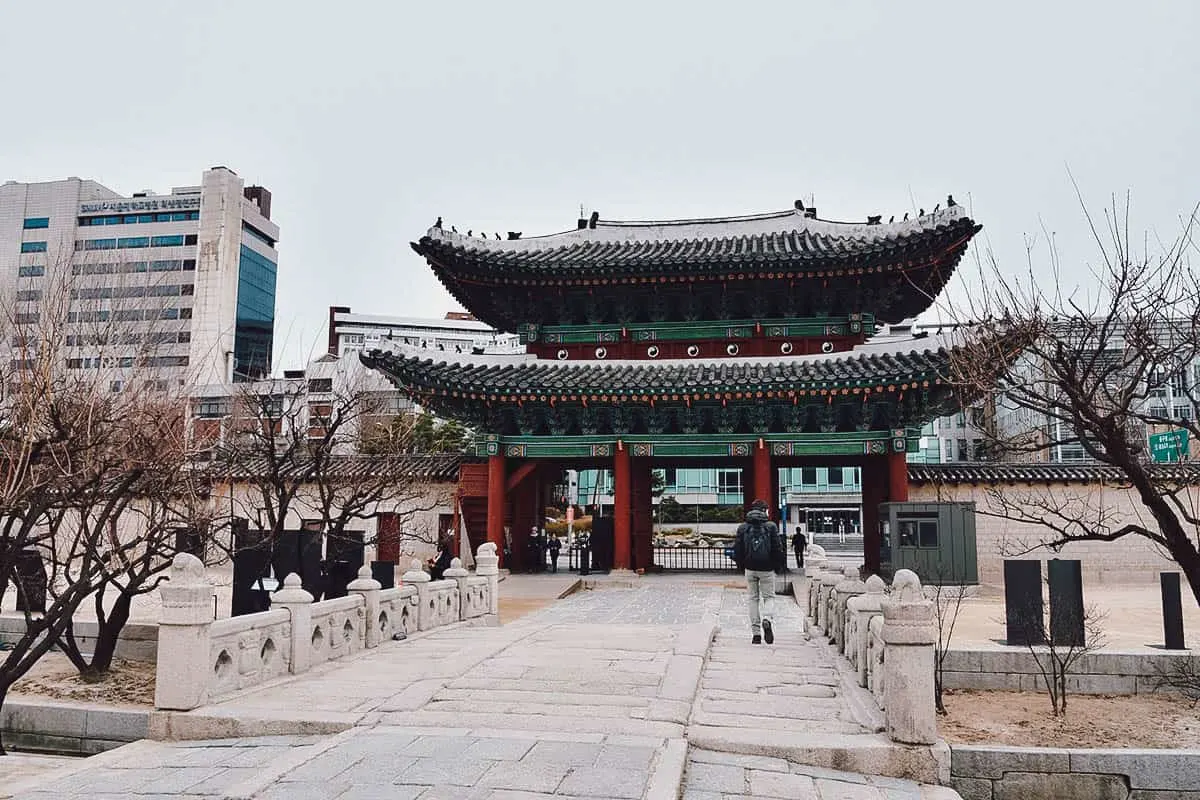
“Changgyeonggung Palace, Seoul, erly 15th century (12)” by Richard Mortel, used under CC BY 2.0 / Processed in Photoshop and Lightroom
Operating Hours: 9AM-9PM, Tue-Sun (closed Mondays)
Admission: KRW 1,000
Closest Subway Station: Anguk Station (Line 3, Exit 3)
Estimated Time to Spend: About 1 – 1.5 hrs
Jongmyo Shrine
Located directly south of Changdeokgung and Changgyeonggung palaces is Jongmyo, a royal shrine where the ancestral rites for deceased Joseon kings and queens are performed.
Jongmyo Shrine is where you’ll find the royal spirit tablets. These are the placards used to designate the seat of a deity or past ancestor. It’s a sacred place that’s more solemn in atmosphere than the royal palaces so it’s important to be respectful when you visit. It’s the only non-palace included in the integrated palace ticket.
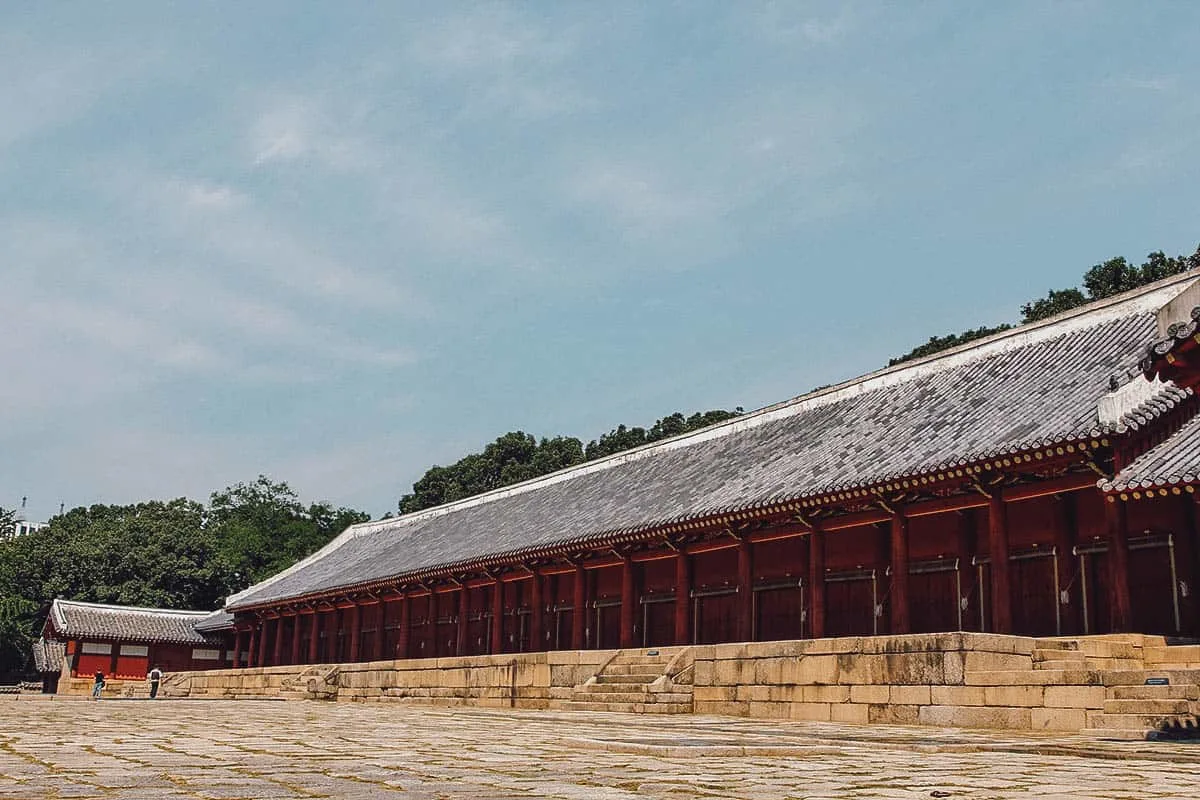
“Jongmyo Shrine” by whyyan, used under CC BY 2.0 / Processed in Photoshop and Lightroom
Operating Hours: 9AM-6PM, Wed-Mon (closed Tuesdays)
Admission: KRW 1,000
Closest Subway Station: Jongno 3(sam)-ga Station (Line 1, 3, 5 / Exit 8, 11)
Estimated Time to Spend: About 1 hr
Ikseondong Hanok Village
Directly to the west of Jongmyo Shrine is Ikseondong Hanok Village, perhaps one of Seoul’s best kept secrets. A labyrinth of hanoks that have been converted into cute cafes and boutiques, it’s like a trendier version of Bukchon Hanok Village.
We visited Ikseondong in the morning when many of the shops were still closed so it’s best to go later in the day. If you’re looking for something a little less touristy in Seoul, then Ikseondong is a great neighborhood to get lost in for an hour or two.
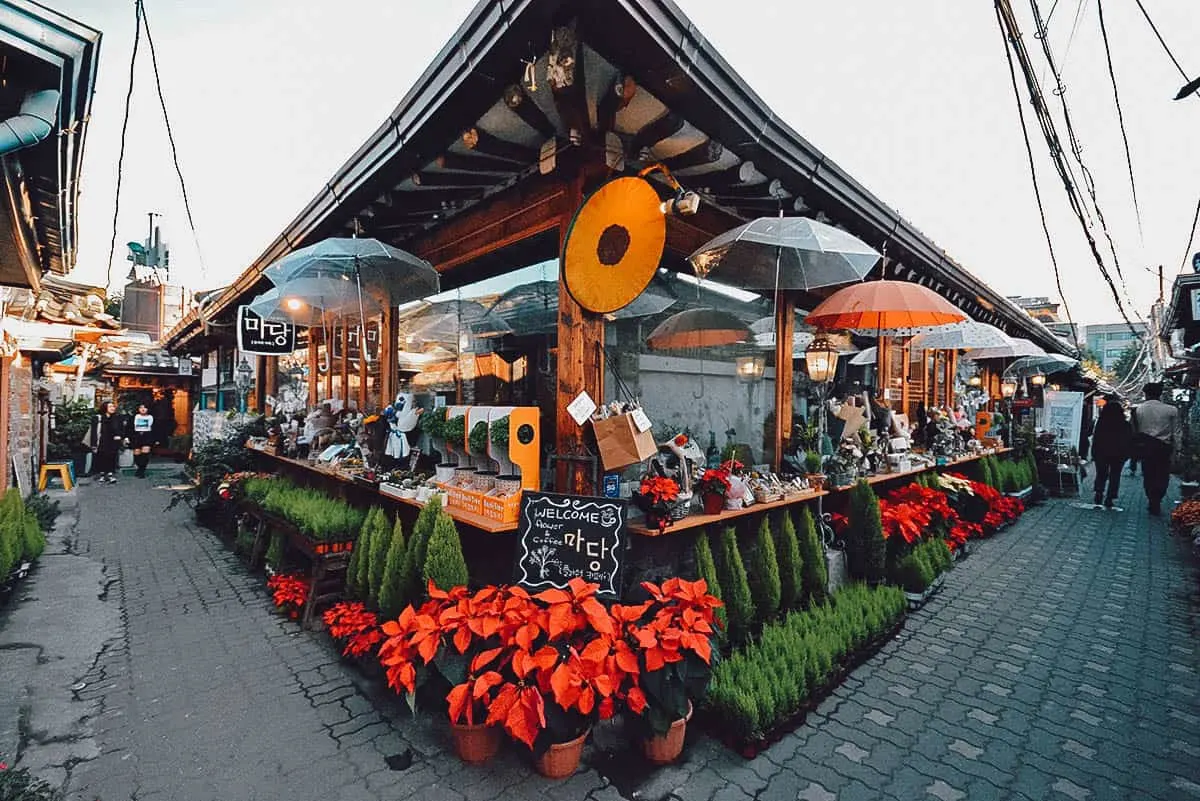
Photo by Alejandro via Flickr (CC0 1.0)
Closest Subway Station: Jongno 3(sam)-ga Station (Line 1, 3, 5 / Exit 6)
Estimated Time to Spend: About 2-3 hrs
INSADONG
Make your way to Insadong, this first of five popular Seoul neighborhoods you’ll be exploring on this Seoul itinerary. It’s comprised of a main street – Insadong-gil – connected to a network of smaller alleyways filled with art galleries, traditional craft shops, restaurants, cafes, and street food stalls.
At one point, Insadong was home to the largest market of antiques and artwork not just in Seoul, but in all of South Korea. If you’re looking to purchase more traditional items in Seoul, then Insadong is the place to go.
It’s fun to explore the area on your own but if you’d like to go with a guide, then you may be interested in this city sightseeing tour that takes you through the heart of Insadong.
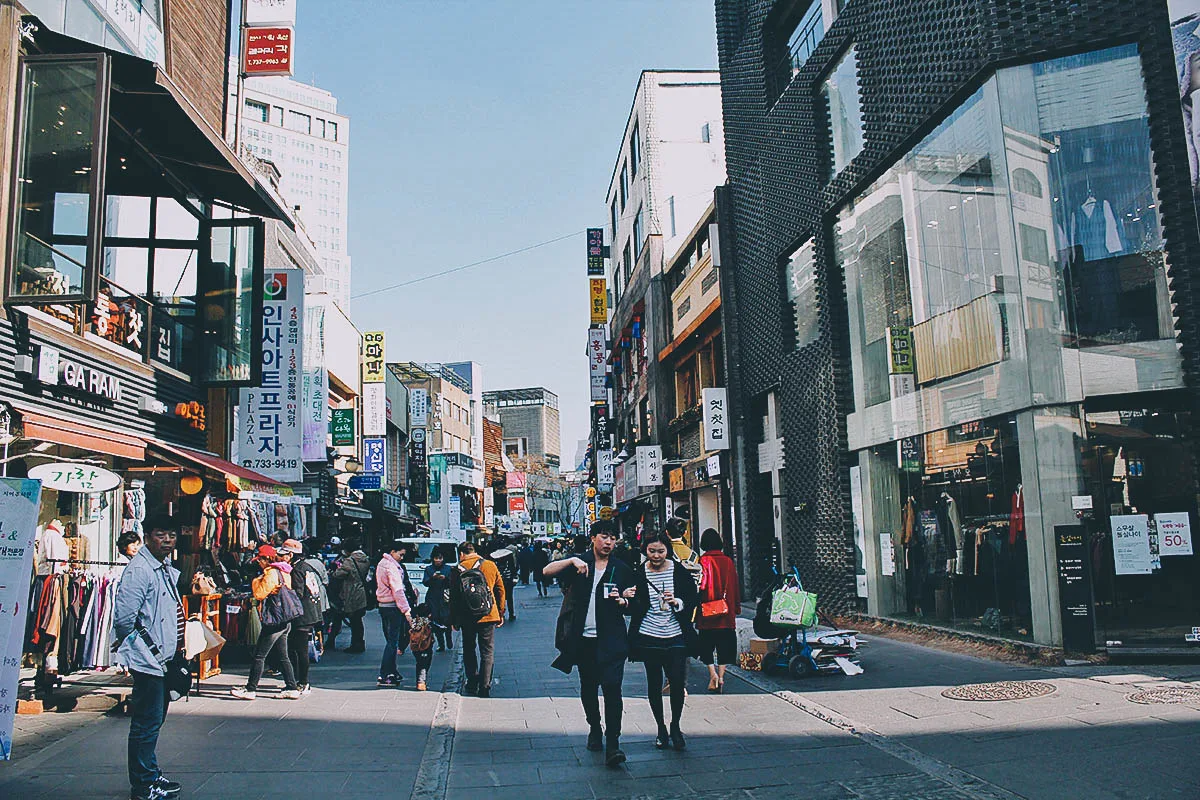
Closest Subway Station: Jonggak Station (Line 1, Exit 11) or Anguk Station (Line 3, Exit 6)
Estimated Time to Spend: About 3-4 hrs
Jogyesa Temple
From Insadong-gil, continue west to Jogyesa Temple, the head temple of the Jogye Order of Korean Buddhism. It’s one of the most important Buddhist temples in Korea and serves as the main venue for many Buddhist events in Seoul.
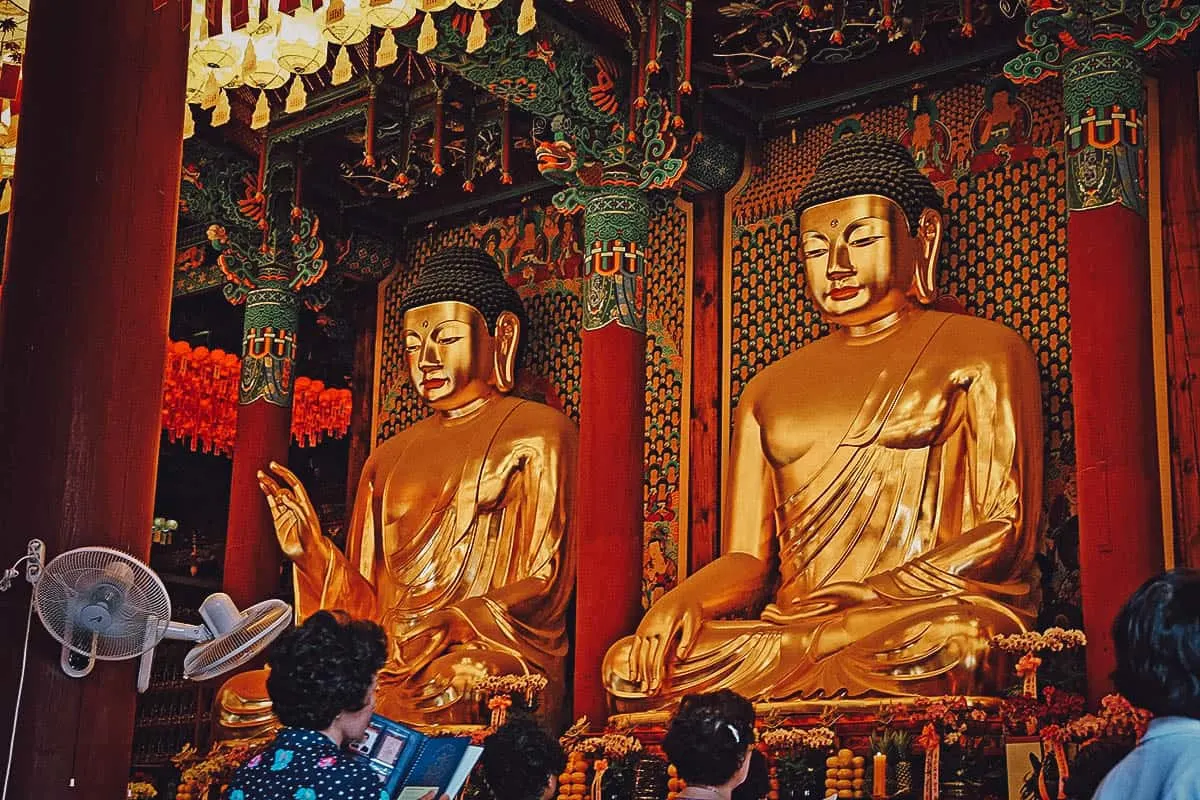
Photo by Various images via Shutterstock
Operating Hours: 24 hrs
Admission: FREE
Closest Subway Station: Jonggak Station (Line 1, Exit 2)
Estimated Time to Spend: About 30 mins – 1 hr
Imun Seolleongtang
A short walk from Jogyesa Temple is Imun Seolleongtang, the oldest restaurant in Seoul. They’ve been serving seolnongtang or ox bone soup for close to 120 years.
My sister-in-law is a Korean former chef from Seoul and one of her favorite dishes is seolnongtang. It’s a hearty soup dish made by boiling beef shank bones for several hours to extract the flavor from the bones.
As you can see below, the process turns the broth cloudy and milky white. Brisket and other cuts of beef are added to the broth along with rice and soft wheat noodles.
Seolnongtang is great to have with makgeolli which is a sweet-sour alcoholic beverage made from rice or wheat mixed with nuruk, a Korean fermentation starter. What better way to end a day of historical sightseeing in Seoul than with dinner and drinks at Seoul’s oldest restaurant?
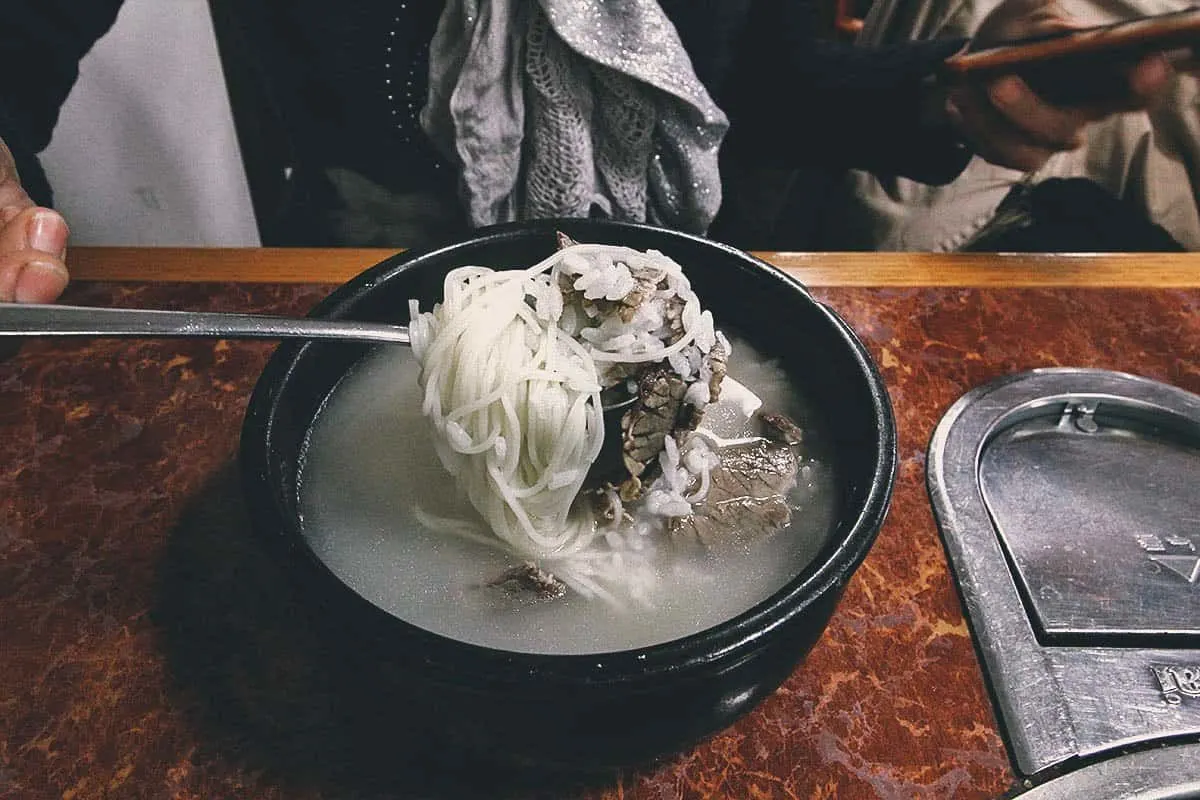
Address: 38-13 Ujeongguk-ro, Gyeonji-dong, Jongno-gu, Seoul, South Korea
Operating Hours: 8AM-9PM, daily
Closest Subway Station: Jonggak Station (Exit 3-1)
What to Order: Seolnongtang, makgeolli
What We Paid: Around KRW 10,000-15,000 per person
SEOUL ITINERARY: DAY 2
Gyeonghuigung Palace
If you haven’t had your fill of palaces yet, then the second day on this Seoul itinerary will take you to Gyeonghuigung Palace, the fourth of the Five Grand Palaces.
During the latter half of the Joseon period, Gyeonghuigung served as the king’s secondary palace. It was where he retreated to in times of emergency. At its peak, it was comprised of about 100 buildings but most were destroyed during the Japanese occupation.
Admission to Gyeonghuigung Palace is free. It’s about a 10-minute walk from Deoksugung Palace. If you’d like to catch the 11AM changing of the guard at Deoksugung, then it’s best to be at Gyeonghuigung by around 9:30AM.
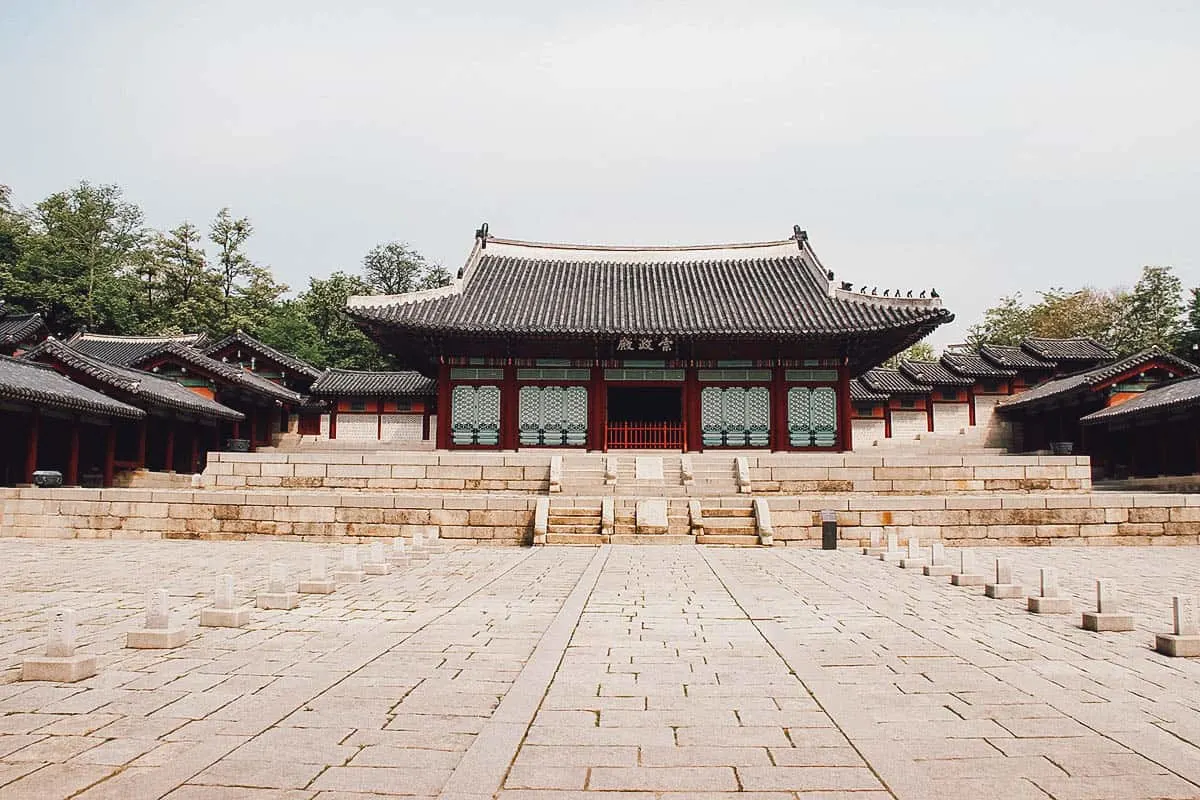
Photo by Gary Todd via Flickr (CC0 1.0)
Operating Hours: 9AM-6PM, Tue-Sun (closed Mondays)
Admission: FREE
Closest Subway Station: Seodaemun Station (Line 5, Exit 4)
Estimated Time to Spend: About 1 hr
Deoksugung Palace
Deoksugung is the last of Seoul’s Five Grand Palaces. It became the primary royal palace after Gyeongbokgung was burned down during the Japanese invasion of Korea. It’s for this reason why it’s the only other palace in Seoul where you can witness the changing of the Royal Guard.
Deoksugung’s changing of the guard happens three times a day – at 11AM, 2PM, and 3:30PM. It takes place in front of Daehanmun which is the palace’s main gate. Admission to Deoksugung is included in the integrated palace ticket.
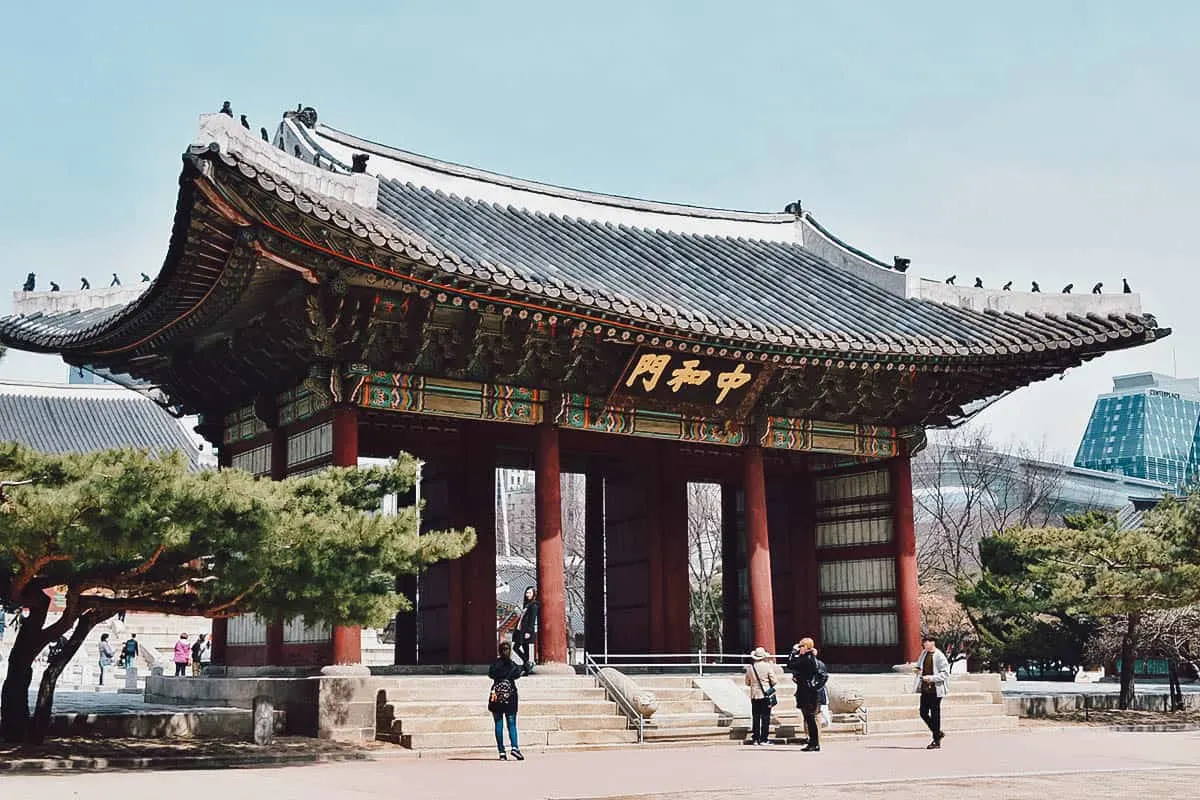
“Deoksugung Palace, Seoul (59)” by Richard Mortel, used under CC BY 2.0 / Processed in Photoshop and Lightroom
Operating Hours: 9AM-9PM, Tue-Sun (closed Mondays)
Admission: KRW 1,000
Closest Subway Station: City Hall Station (Line 1, 2 / Exit 1, 2, 3)
Estimated Time to Spend: About 1 hr
Jeonju Yuhalmeoni Bibimbap
After exploring Deoksugung, walk over to Jeonju Yuhalmeoni Bibimbap for lunch. Owned and operated by Grandma Yu, this humble restaurant has been serving Jeonju-style bibimbap in Seoul for over 40 years.
Like bulgogi, galbi, or japchae, bibimbap is a beloved and well-known Korean dish. It refers to a bowl of white rice topped with sauteed and seasoned vegetables, gochujang (Korean chili paste), a raw or fried egg, and sliced meat. The contents are mixed together thoroughly before being eaten.
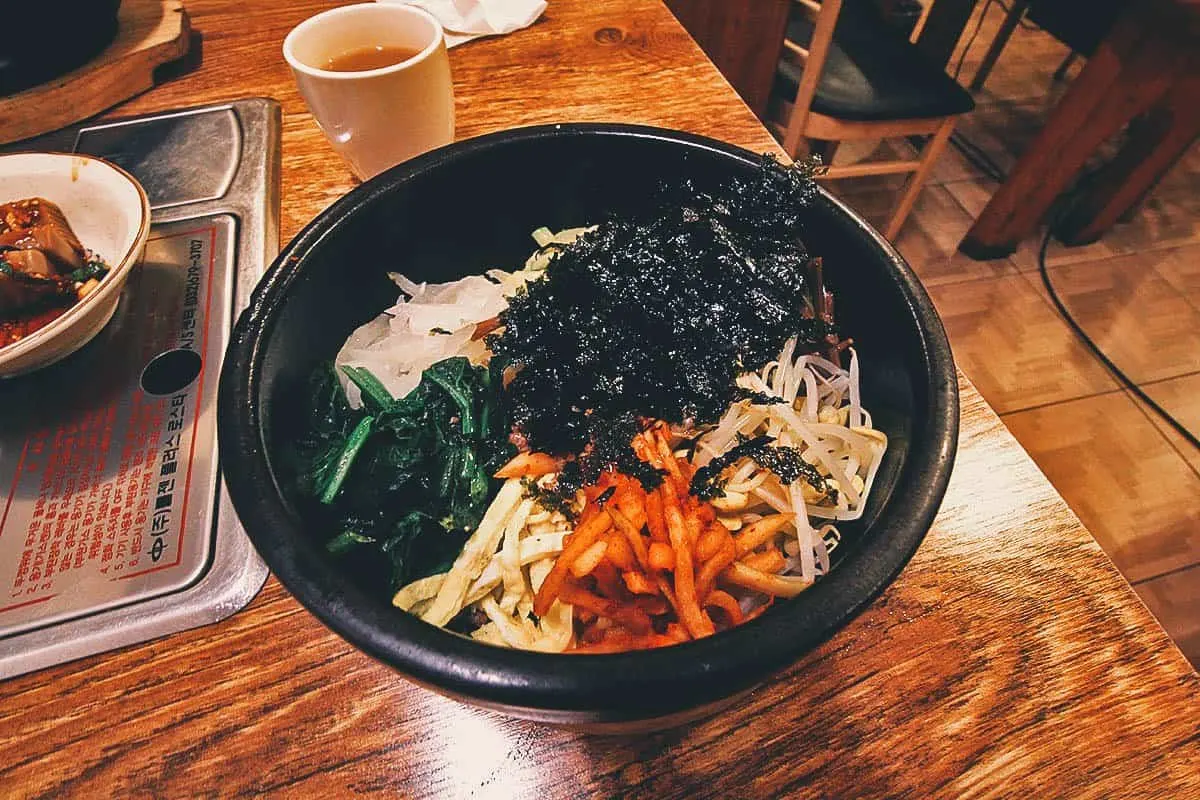
Address: 12-2, Bukchang-dong, Jung-gu, Seoul, South Korea
Operating Hours: 11AM-7PM, Thurs-Sat / 11AM-6PM, Sun-Wed
Closest Subway Station: City Hall Station (Exit 8)
What to Order: Jeonju bibimbap
What We Paid: Around KRW 10,000 per person
Namdaemun Market
After lunch, continue south to Namdeamun Market. It’s Korea’s largest traditional market with over 10,000 shops selling a variety of goods like clothes, houseware, toys, accessories, and food.
Spend as much time as you want exploring the market before proceeding to the next stop on this Seoul itinerary. Markets are one of the best places to experience local Korean culture and sample Seoul’s street food.
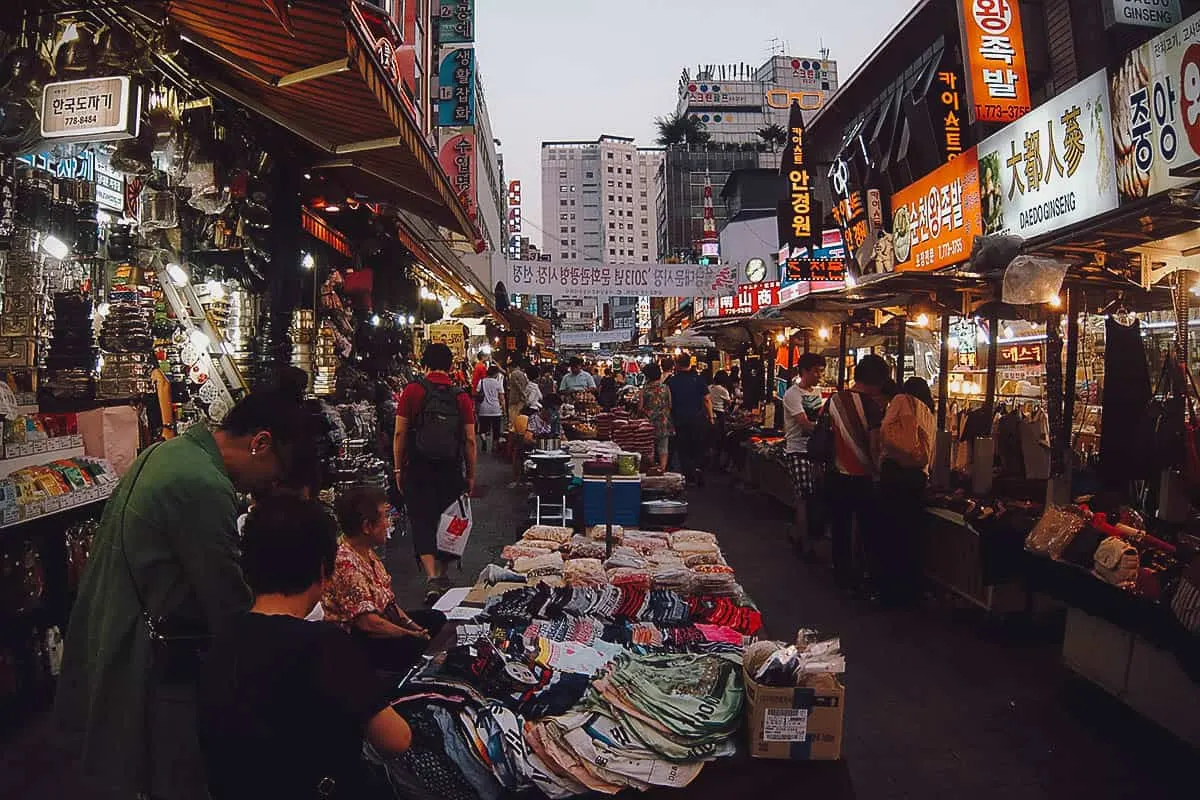
“Namdaemun Market” by Adrián Pérez, used under CC BY-SA 2.0 / Processed in Photoshop and Lightroom
Operating Hours: 24 hrs
Closest Subway Station: Hoehyeon Station (Line 4, Exit 5)
Estimated Time to Spend: About 1-2 hrs
N Seoul Tower
From Namdaemun Market, continue south to Namsan Seoul Tower. It’s a little under 2 km (1.2 miles) away, part of which is uphill, so you may want to take the Seoul metro to Myeongdong station then walk the rest of the way.
Standing at almost 480 meters (1,575 ft) above sea level, N Seoul Tower is one of the tallest towers* not just in Seoul, but in all of Asia. It towers over Namsan Mountain and boasts an observation deck offering sweeping 360° views of downtown Seoul.
The observation deck is the main draw but there are other attractions within and around the tower as well like the Locks of Love, a game plaza, a VR entertainment center, and over a dozen restaurants and cafes.
You can get to N Seoul Tower on foot, by taxi or bus, or by cable car. Most tourists go by cable car. You can purchase tickets to the observatory at the gate.
*If you’d like to visit the tallest tower in Seoul, then head over to Lotte World Tower. It’s the tallest building in South Korea and the 5th tallest in the world.
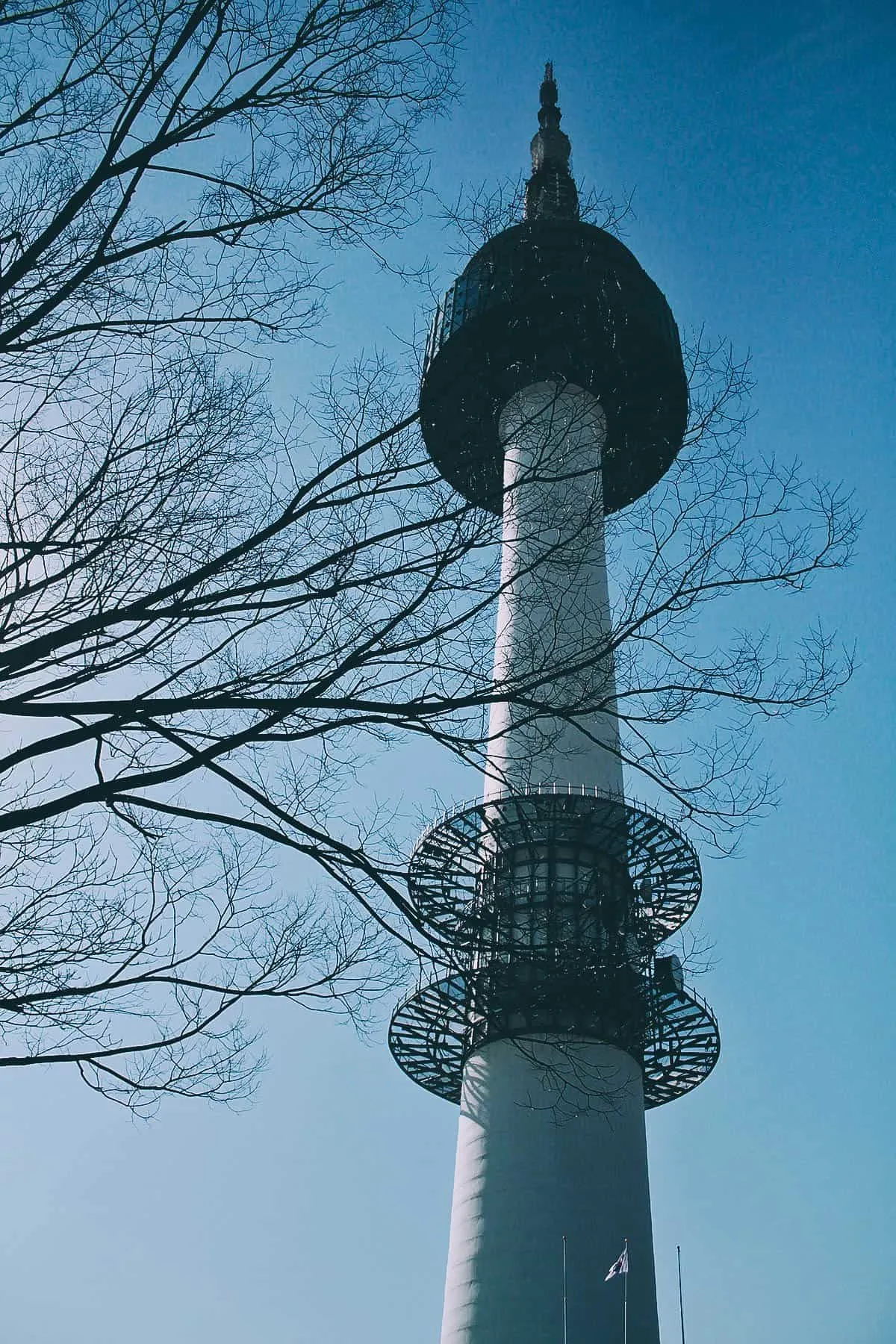
Operating Hours: 11AM-10PM, daily
Admission: KRW 16,000 (observatory), KRW 13,000 (cable car roundtrip)
Closest Subway Station: Myeong-dong Station (Line 4, Exit 3)
Estimated Time to Spend: About 1-2 hrs
MYEONGDONG
From N Seoul Tower, take the cable car back down then walk to Myeongdong, one of Seoul’s most popular neighborhoods and shopping districts. It boasts a neon-lit labyrinth of department stores and boutiques selling a variety of goods like designer apparel, cosmetics, bags, luggage, and mobile accessories.
If you’re visiting Seoul primarily to shop, then this is probably where you’ll be spending most of your time.
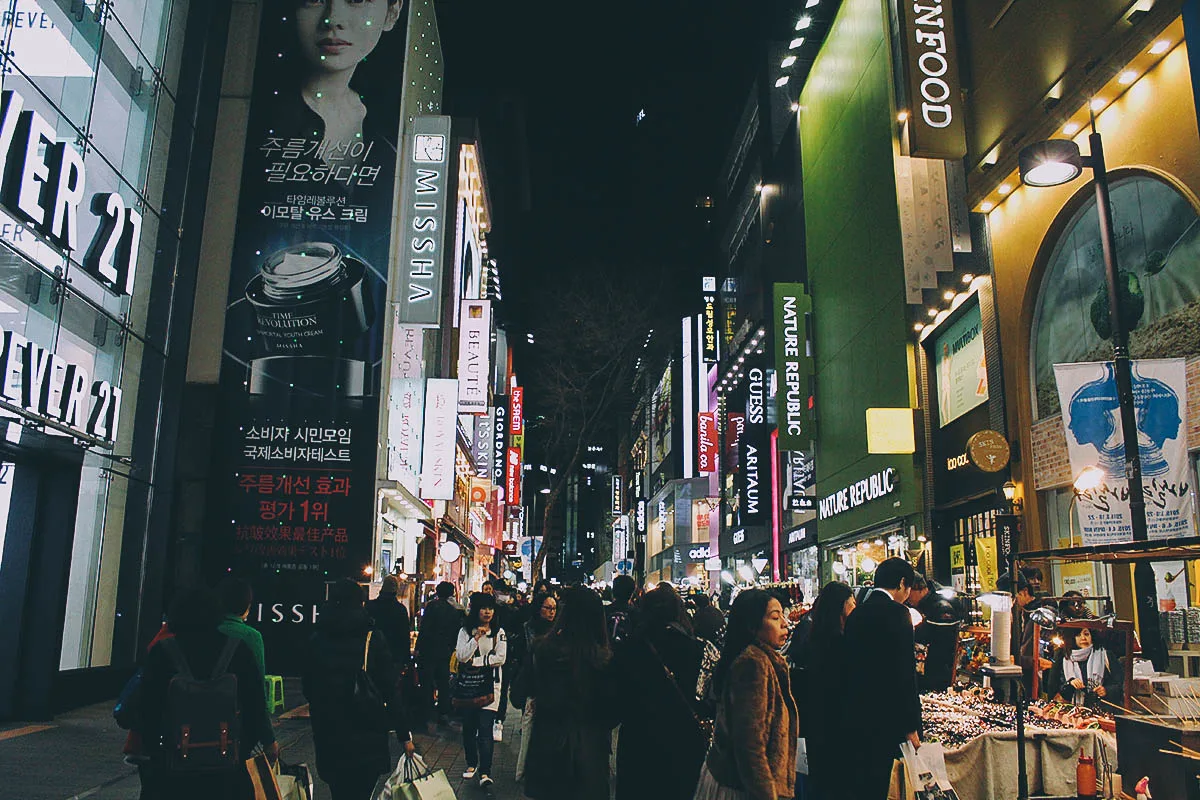
Aside from designer boutiques, Myeongdong is home to a wealth of restaurants and cafes. It’s one of the most popular areas in Seoul to have street food.
Various vendors set up in the late afternoon to sell a variety of street food like tteokbokki (rice cakes), skewered seafood, and most decadent of all – grilled lobster tails.
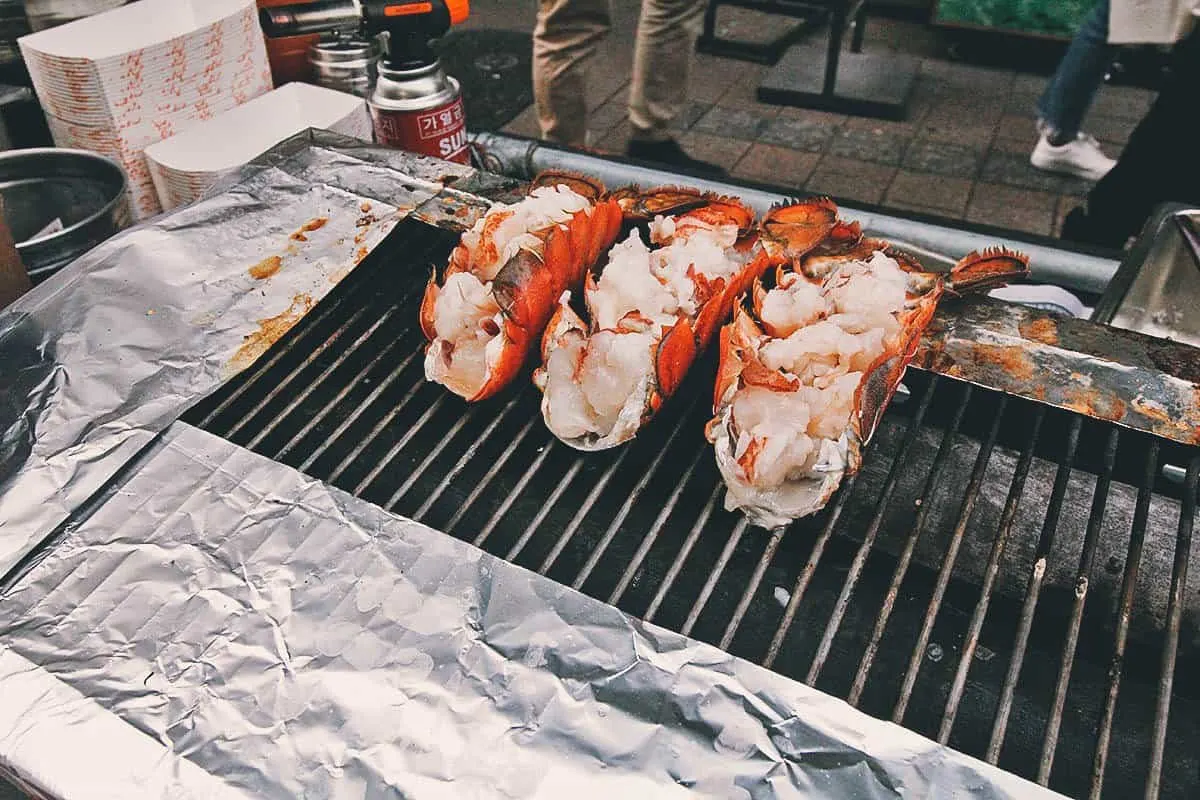
Closest Subway Station: Euljiro 1(il)-ga Station (Line 2 / Exit 5, 6, 7) or Myeong-dong Station (Line 4 / Exit 5, 6, 7, 8)
Estimated Time to Spend: About 3-4 hrs
Myeongdong Kyoja
There are many restaurants to choose from in Myeongdong but a popular choice is Myeongdong Kyoja. They’ve been around for over 50 years and are known for serving some of the best kalguksu or knife-cut noodles in Seoul.
Kalguksu consists of handmade, knife-cut wheat flour noodles served in a bowl with broth and other ingredients. At Myeondong Kyoja, it’s typically enjoyed with a side of steamed mandu or Korean-style dumplings.
Kalguksu is great but if you’d like more restaurant suggestions in the Myeongdong area, then check out our list of must-try restaurants in Seoul.
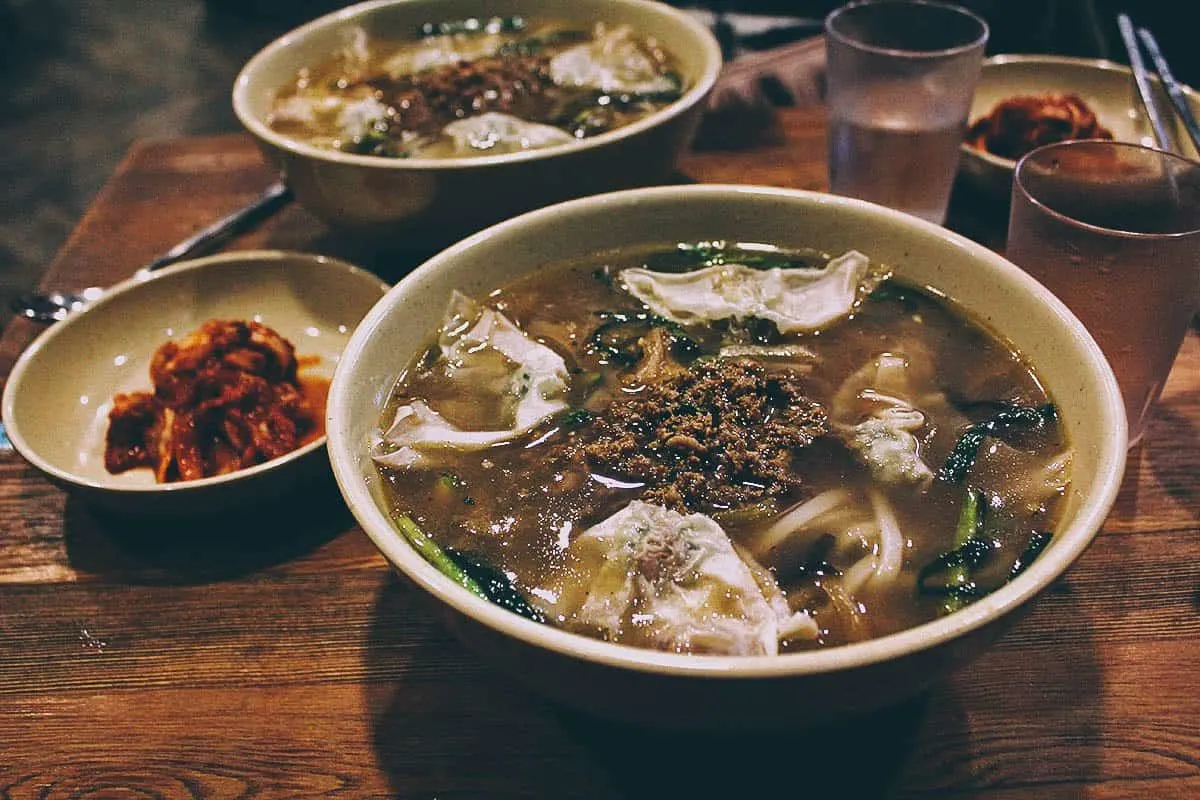
Address: 29 Myeongdong 10-gil, Myeongdong 2(i)-ga, Jung-gu, 서울특별시 South Korea
Operating Hours: 10:30AM-9:30PM, daily
Closest Subway Station: Myeongdong Station (Exit 8)
What to Order: Kalguksu, mandu
What We Paid: Around KRW 10,000-15,000 per person
SEOUL ITINERARY: DAY 3
Noryangjin Fisheries Wholesale Market
On the third day of this Seoul itinerary, head over to Noryangjin Market, one of the biggest and most well-known seafood markets in Seoul. We visited Noryangjin on our very first trip to Seoul to try sannakji, Korea’s infamous dish of “live” octopus sashimi.
Parts of Noryangjin stay open for 24 hours but one of the most interesting times to visit is at 3AM during the live fish auction. Up to 300 tons of marine products are traded at the market everyday.
What makes the market even more interesting are the many restaurants on the second floor that can prepare and cook your seafood for you. Just bring your fresh seafood to them, negotiate a price, and enjoy a seafood feast in Seoul.
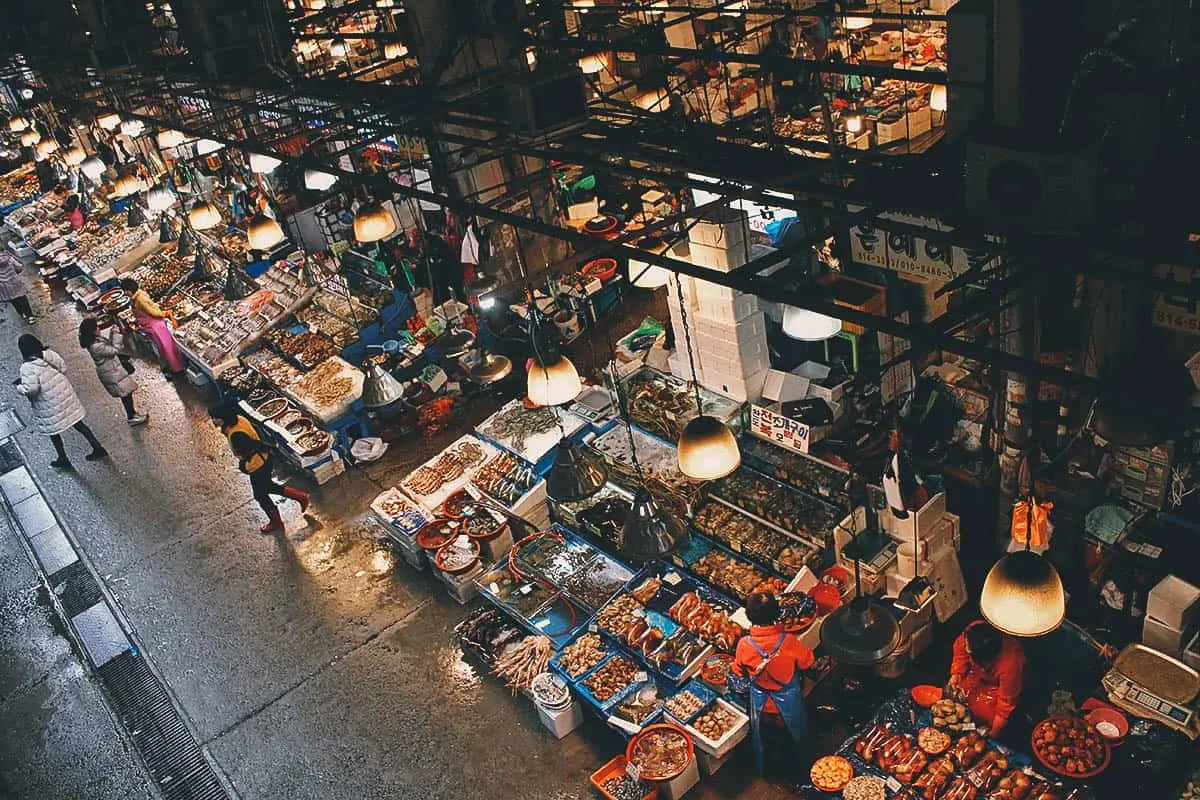
Operating Hours: 24 hrs (high-class fish market)
Closest Subway Station: Noryangjin Station (Line 1, Exit 1)
Estimated Time to Spend: About 1-2 hrs
HONGDAE
After your seafood feast, hop back into the Seoul metro and head over to Hongdae, one of our favorite neighborhoods in Seoul.
Hongdae refers to the area around Hongik University. It’s a lively and youthful neighborhood with plenty of cute cafes, restaurants, boutiques, and street performers.
Because Hongdae is populated with students, it has a fun college town atmosphere that’s unlike any other in Seoul. You could easily spend the whole day here exploring its myriad shops and cafes.
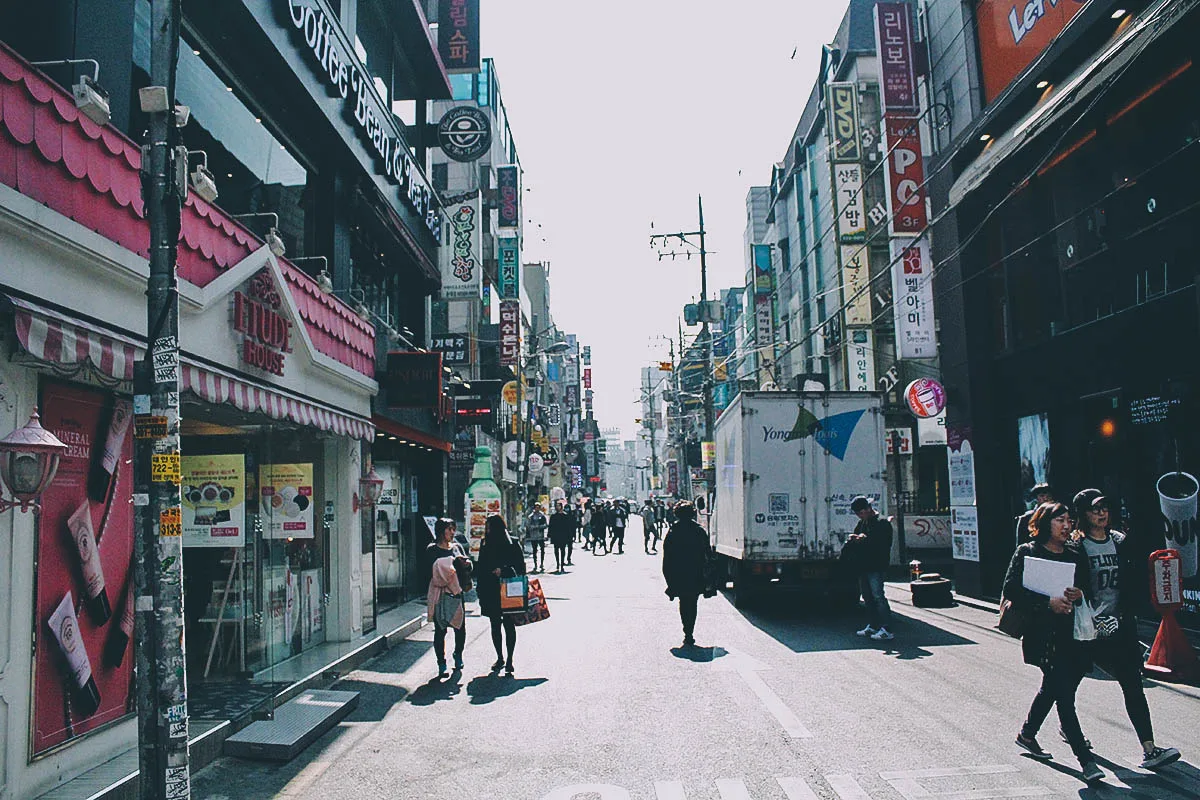
Closest Subway Station: Hongik University Station (Line 2, Exit 9)
Estimated Time to Spend: About 3-4 hrs
GANGNAM
The Gangnam district is one of the most affluent neighborhoods in Seoul. It’s drawn comparisons to Beverly Hills, CA and features some of the most expensive real estate in Seoul. The district gained global popularity thanks to Korean singer Psy’s smash hit “Gangnam Style”.
BBQ Olive Chicken Cafe
If you’re a fan of Korean television dramas, then you may recognize this place. It was featured prominently in the hugely successful Goblin series.
BBQ Olive Chicken Cafe is a chimaek restaurant chain with multiple outlets throughout Seoul. Chimaek refers to the popular combination of Korean fried chicken and beer, one of the best duos you can have in Seoul!
Two BBQ Olive Chicken Cafe outlets were featured in the Goblin tv series – one by Cheonggyecheon Stream and another in Gangnam. The former is more popular but this itinerary for Seoul takes you to the heart of the Gangnam commercial district next so I’m suggesting you go to the one in Gangnam.
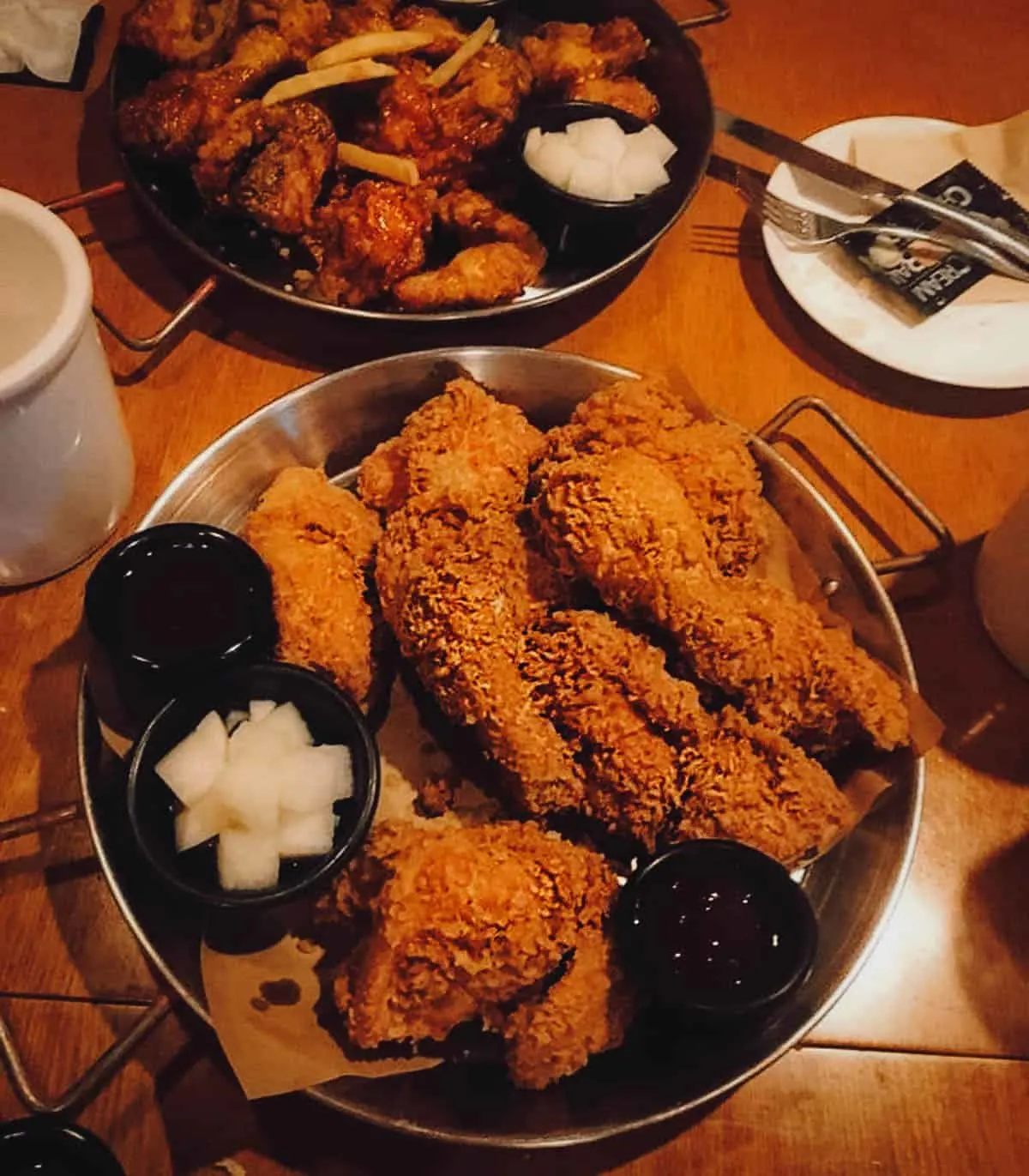
Address: 687-2 Ilwon-dong, Gangnam District, Seoul, Korea
Operating Hours: 11:30AM-2AM, daily
Closest Subway Station: Daecheong Station (Exit 4)
What to Order: Golden Olive Chicken, sweet potato fries
What We Paid: Around KRW 15,000 per person
Bongeunsa Temple
After lunch, take the Seoul metro to Bongeunsa Temple, a Buddhist temple located directly north of COEX Mall. It’s a good place to make a quick stop before visiting the mall’s Instagram-famous Starfield Library.
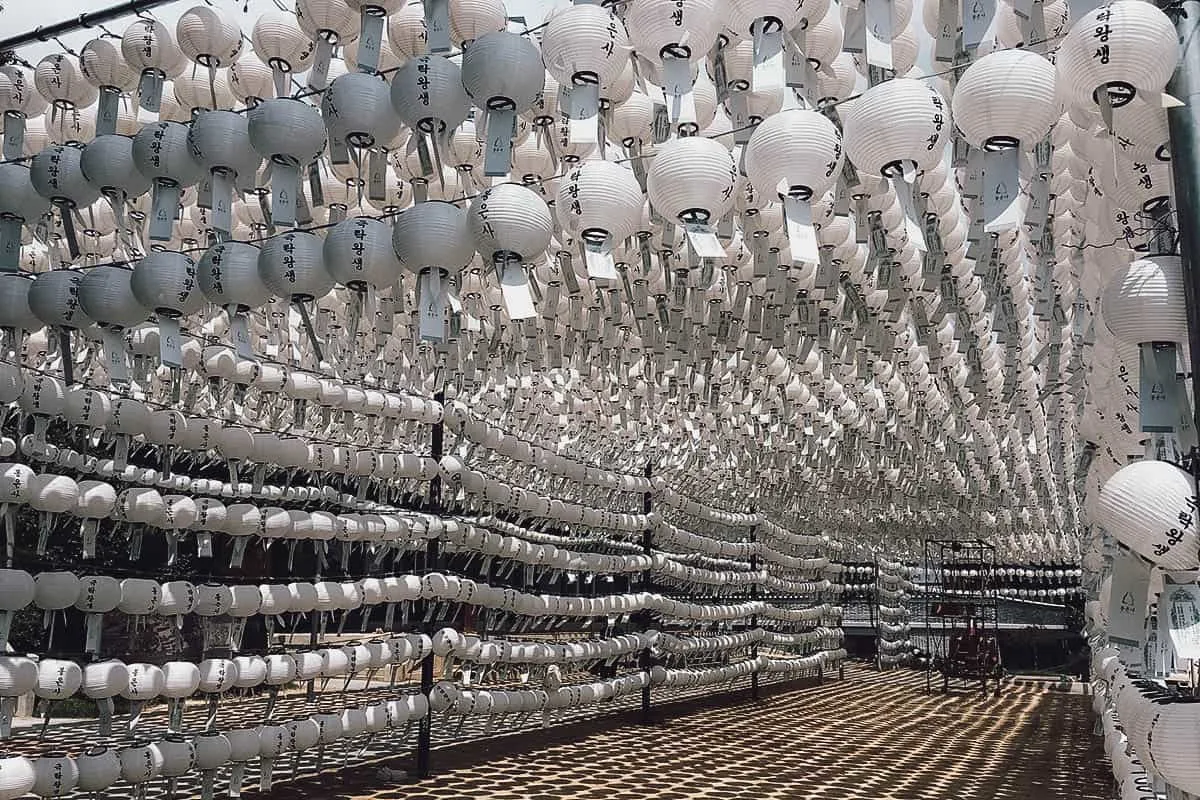
“Bongeunsa temple, Seoul” by mia!, used under CC BY-SA 2.0 / Processed in Photoshop and Lightroom
Operating Hours: 24 hrs
Admission: FREE
Closest Subway Station: Bongeunsa Temple Station (Line 9, Exit 1)
Estimated Time to Spend: About 1 hr
COEX Mall Starfield Library
Starfield Library is an open-air public library located in the middle of COEX Mall. It features hundreds of books and magazines, even iPads that you can use to read E-books. It’s a stunning library that’s become one of the most popular picture-taking spots in Seoul.
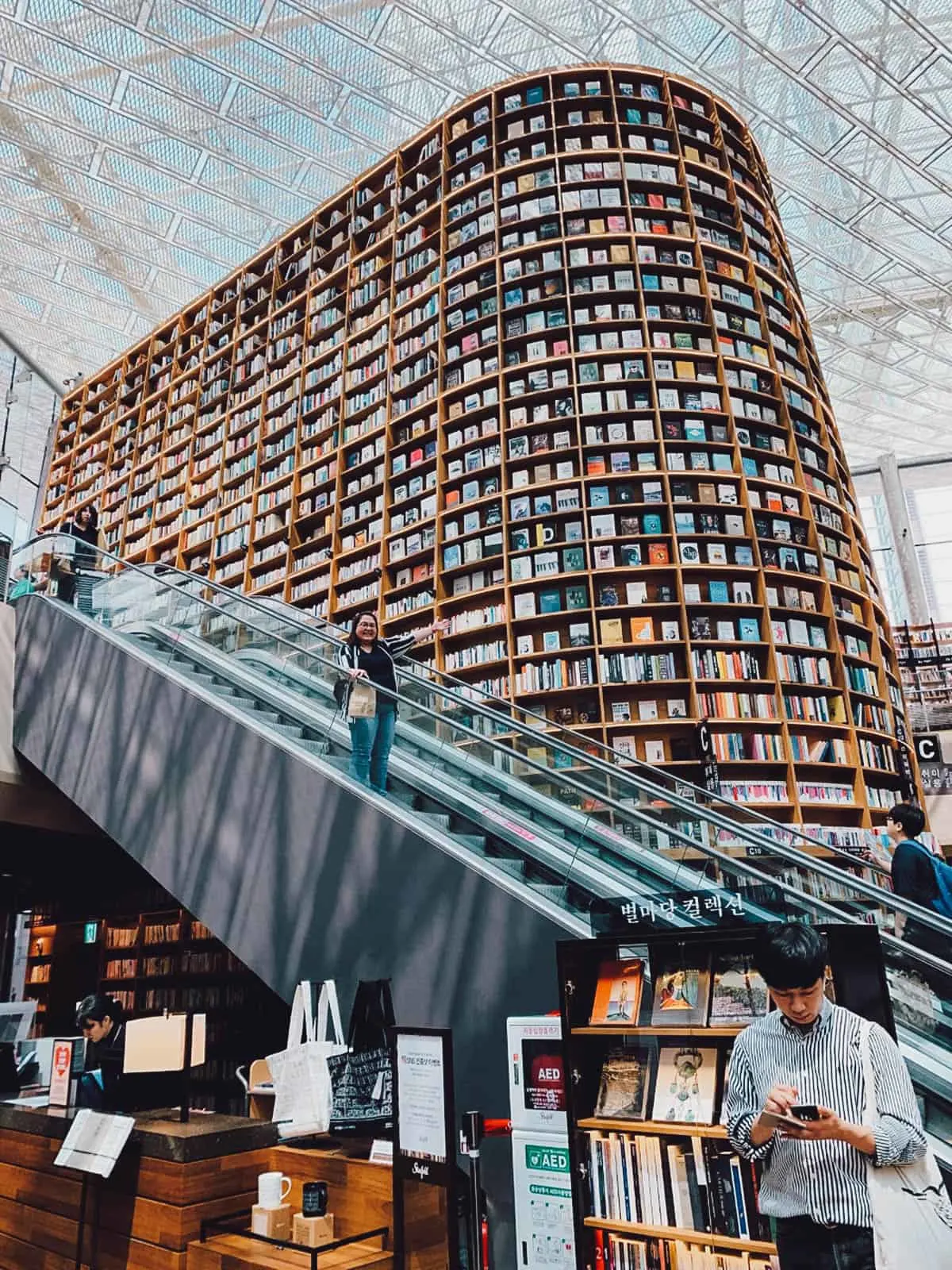
Operating Hours: 10:30AM-10PM, daily
Admission: FREE
Closest Subway Station: Samseong Station (Line 2 / Exit 5, 6), Bongeunsa Station (Line 9 / Exit 1, 6, 7), or Cheongdam Station (Line 7, Exit 2)
Estimated Time to Spend: About 2-3 hrs
Gangnam Shopping Street
If you’d like to go shopping or get a bite to eat in Gangnam, then a good place to go is Gangnam-daero or Gangnam Shopping Street. Located between Gangnam and Sinnonhyeon stations, this stretch of road is the most popular shopping and dining area in the Gangnam district.
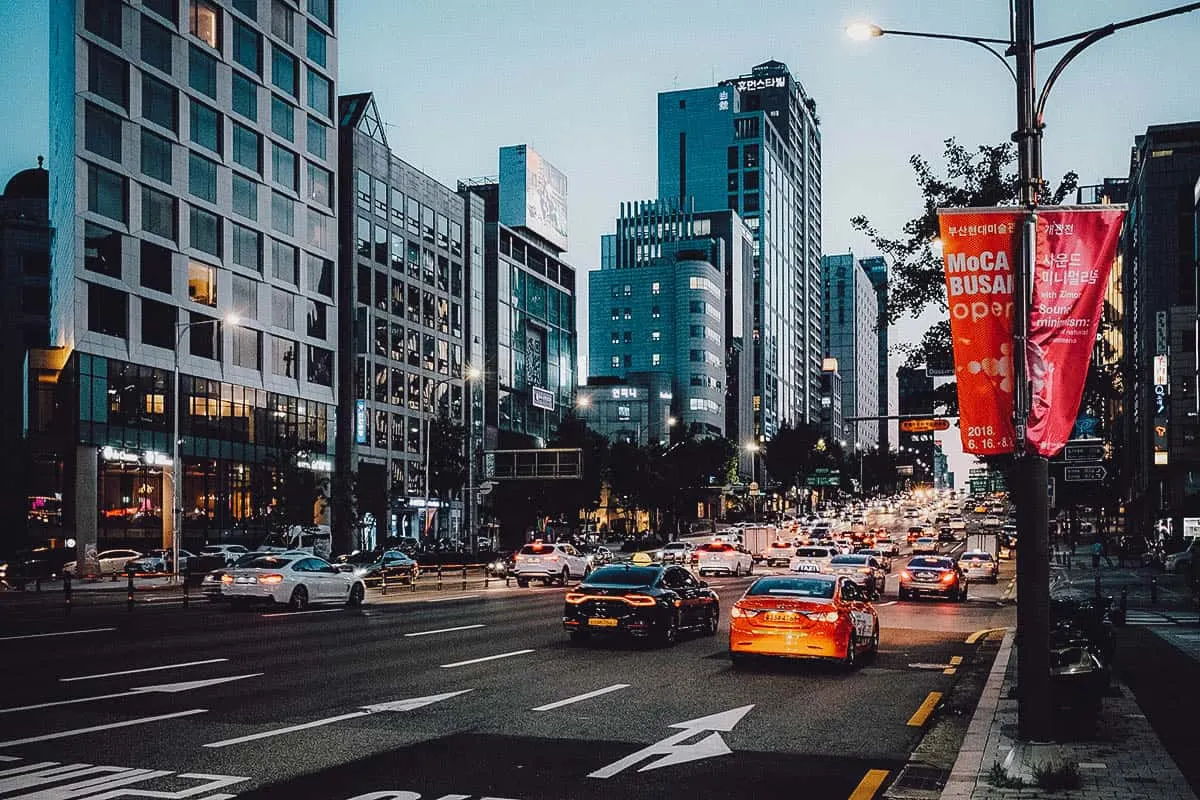
“Gangnam-gu, Seoul” by Kan Wu, used under CC BY 2.0 / Processed in Photoshop and Lightroom
Closest Subway Station: Gangnam Station (Line 2 / Exit 10, 11) or Sinnonhyeon Station (Line 9 / Exit 5, 6)
Estimated Time to Spend: About 2-3 hrs
Wonjo Masan Halmae Agujjim
If you walk north on Gangnam-daero, then you’ll eventually find yourself at a cluster of restaurants specializing in ganjang gejang. It’s a dish of raw crab marinated in soy sauce.
To prepare, fresh raw crabs are cleaned then put in an earthenware crock where they’re salted for about six hours. A mixture of soy sauce and other ingredients is boiled briefly then poured over the salted crabs.
After an hour, the sauce is removed and reboiled before again being poured over the crabs. This process is repeated several times before the dish is chilled and consumed.
I love crabs but I’ve never had it prepared in this way. It’s absolutely delicious and one of my favorite things to eat in Seoul. If you enjoy exploring the world through food, then you need to try ganjang gejang.
There are a few ganjang gejang restaurants in this area but we went to Wonjo Masan Halmae Agujjim based on the strength of its reviews.
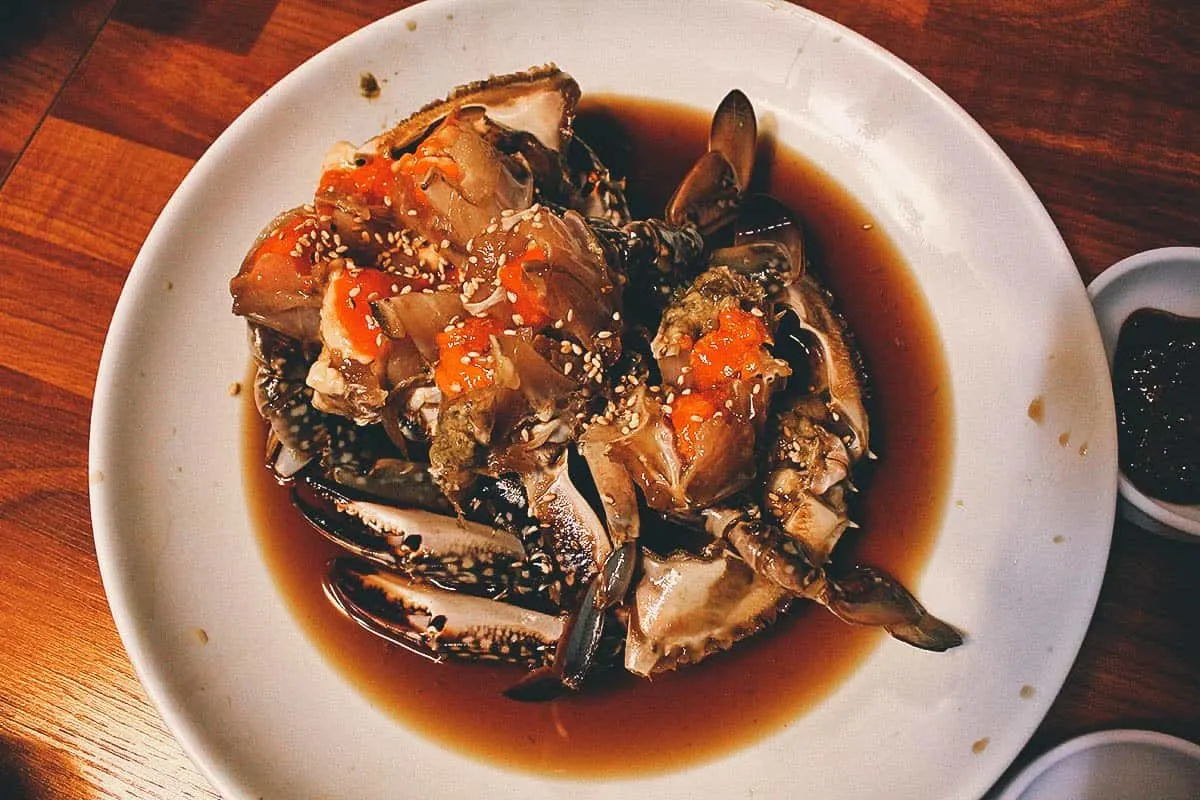
Address: 10 Gangnam-daero 99-gil, Seocho-gu, Seoul, South Korea
Closest Subway Station: Sinsa Station (Exit 4)
What to Order: Ganjang gejang
What We Paid: Around KRW 30,000-40,000 per person
SEOUL ITINERARY: DAY 4
Cheonggyecheon Stream
The fourth day on this Seoul itinerary starts at Cheonggyecheon, an 11 km long urban stream that runs through the heart of central Seoul. It starts at Cheonggye Plaza and passes under 22 bridges before flowing out into the Han River.
Cheonggyecheon Stream is a favorite photo backdrop for both locals and tourists in Seoul. During the hotter months, you’ll often find people sitting on the stream’s edge with their feet submerged in the water.
It’s easy to walk the length of Cheonggyecheon Stream on your own, but if you’d like to learn about the many tourist attractions along the way, then you may be interested in joining this free walking tour.
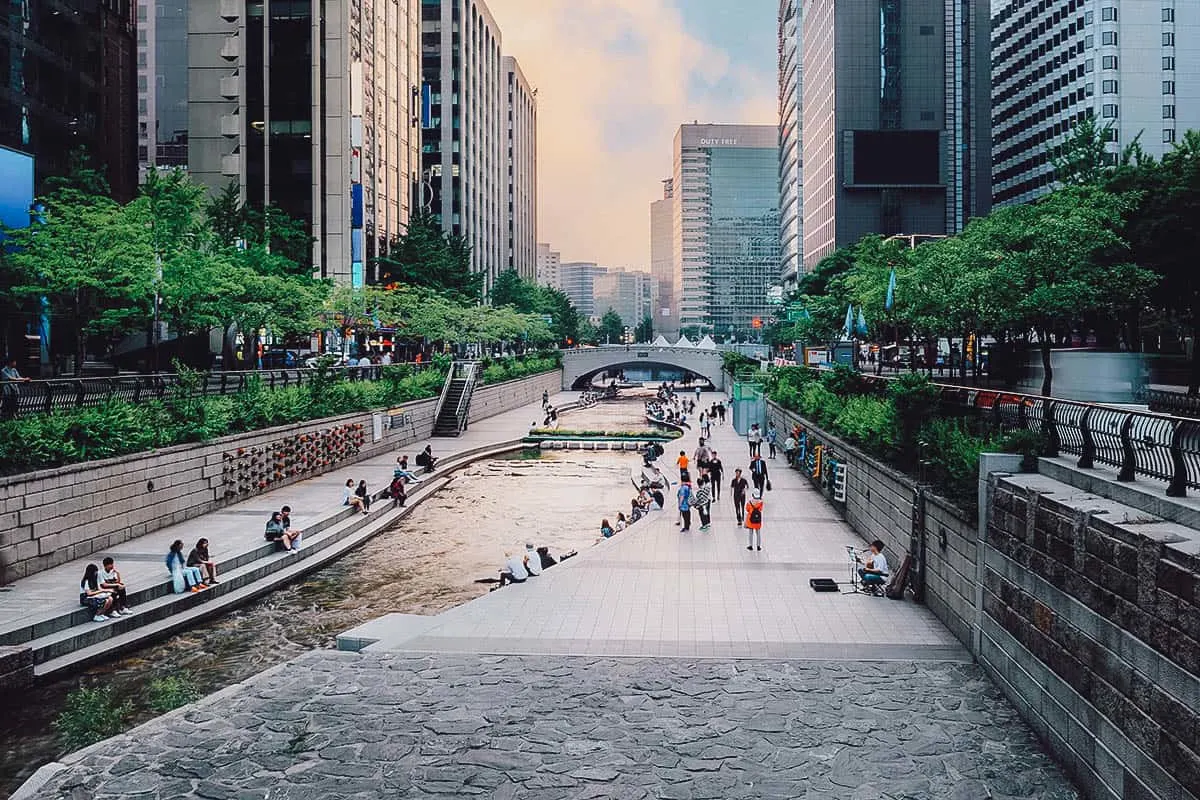
Photo by SS pixels via Shutterstock
Closest Subway Station: City Hall Station (Line 1, Exit 4)
Estimated Time to Spend: About 1-2 hrs
Gwangjang Market
Walk east along the stream to Gwangjang Market, one of Seoul’s oldest and most well-known traditional markets. Open since 1905, it’s famous for its vintage clothing arcade and its abundance of street food.
Gwangjang Market is one of the best places to have a Korean breakfast in Seoul. We were there early in the morning when the stalls were packed with locals enjoying dishes like eomuk (fish cakes), tteokbokki, bindaetteok (mung bean pancakes), and kimbap (Korean sushi rolls). A few stalls were even offering sannakji.
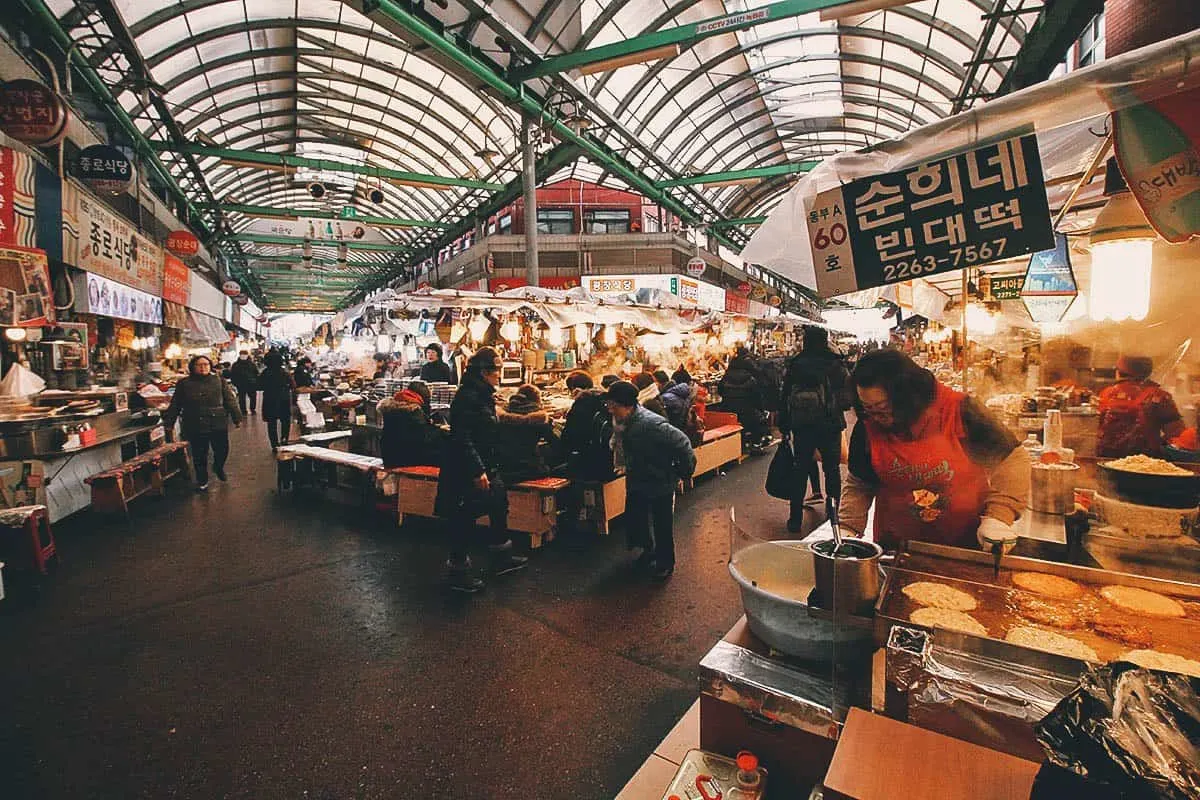
Operating Hours: 8:30AM-11PM, daily
Closest Subway Station: Jongno 5-ga Station (Line 1 / Exit 7, 8)
Estimated Time to Spend: About 1-2 hrs
Woo Lae Oak
A short walk from Gwangjang Market is Woo Lae Oak, one of Seoul’s oldest restaurants. They’re known for their bulgogi and other barbecue dishes but they’re also famous for their naengmyeon.
Naengmyeon is a dish of chilled buckwheat noodles typically served in an iced broth made from beef, chicken, or dongchimi (watery brine made from kimchi). It’s originally a North Korean dish that became popular throughout the peninsula after the Korean War.
When we had lunch at Woo Lae Oak, everyone else was having barbecue but I suggest trying the naengmyeon. It’s an interesting dish and Woo Lae Oak is said to be one of the best places to try it in Seoul.
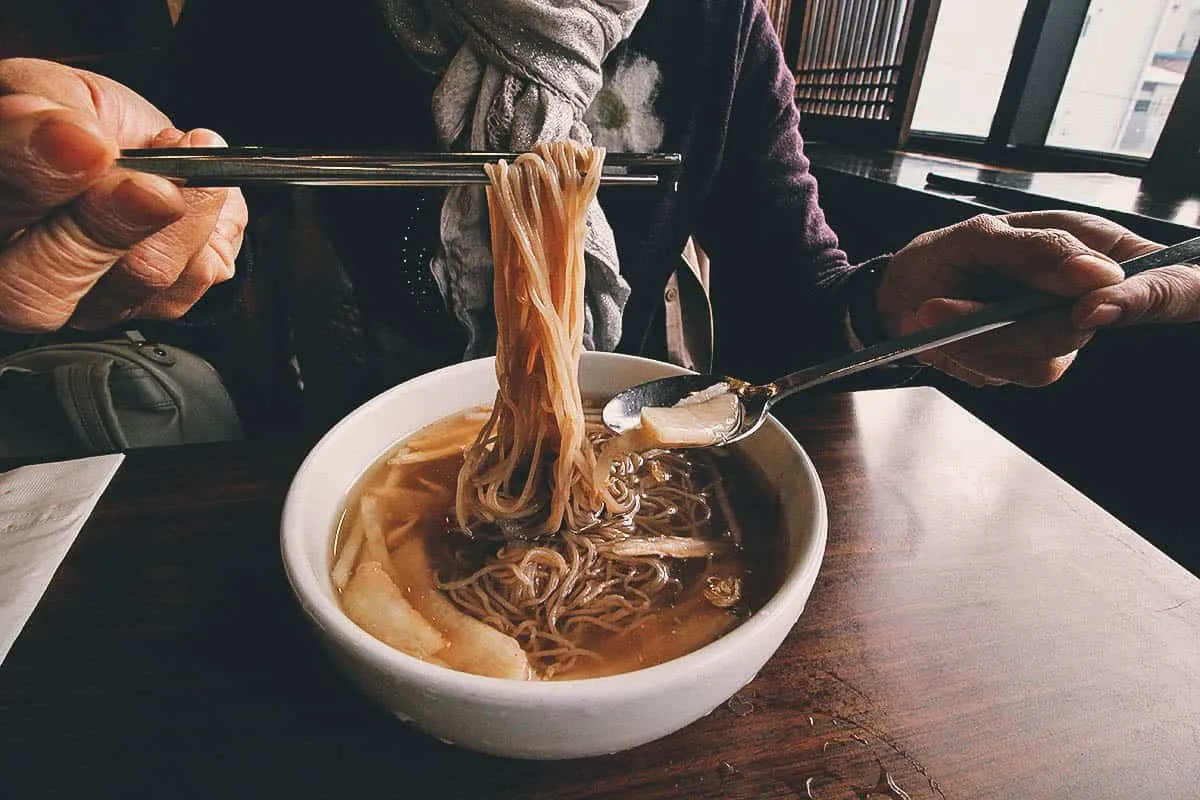
Address: 62-29, Changgyeonggung-ro, Jung-gu, Seoul, South Korea
Operating Hours: 11:30AM-9:30PM, daily
Closest Subway Station: Euljiro 4-ga Station (Exit 4)
What to Order: Naengmyeon, bulgogi
What We Paid: Around KRW 15,000-20,000 per person
Ihwa Mural Village
From Woo Lae Oak, make your way north to Ihwa Mural Village. We haven’t been there but it’s a popular destination for people wanting to take pictures for their Instagram.
Ihwa Mural Village was once a decaying residential neighborhood set for demolition over a decade ago. To save the neighborhood, local artists from Seoul were commissioned to create murals and sculptures and turn the area into an artistic landmark. The initiative worked, with Ihwa Mural Village becoming a popular tourist attraction in Seoul.
Like Bukchon Hanok Village, Ihwa Mural Village is a residential neighborhood so you’re reminded to keep your voices down when you visit.
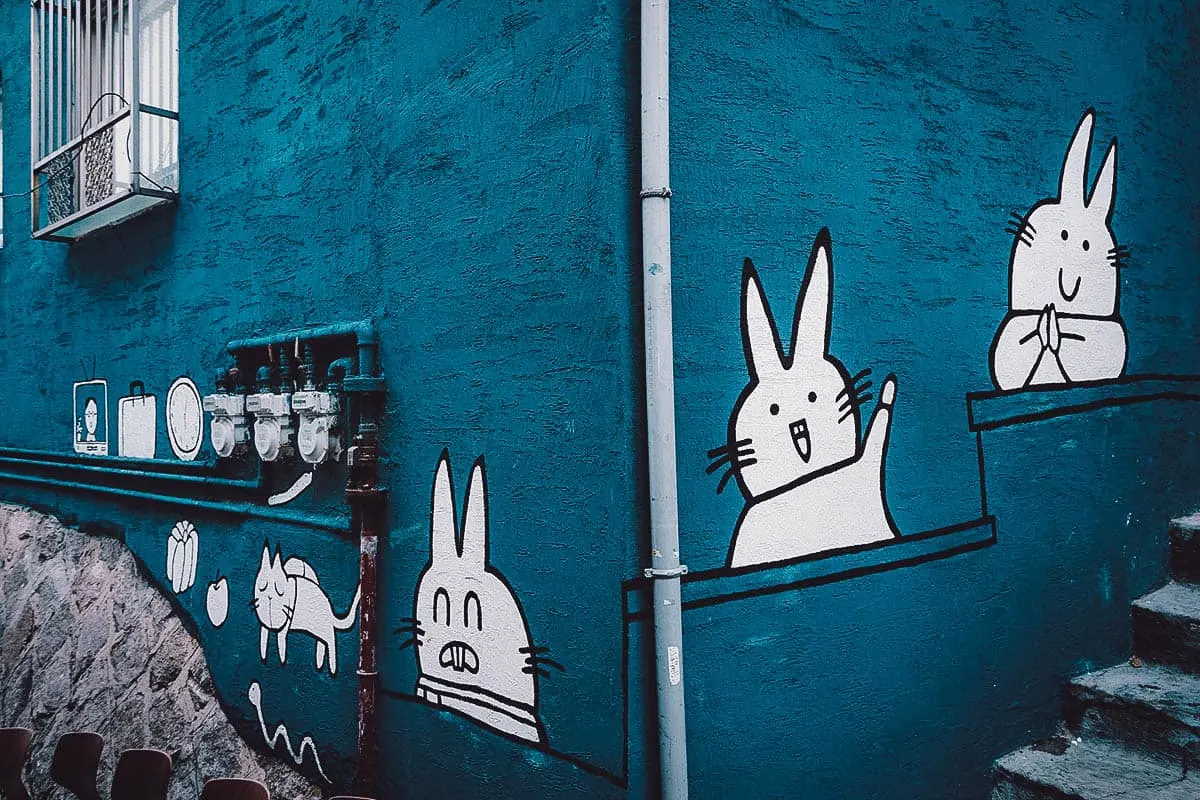
“梨花洞壁畫村” by Wei-Te Wong, used under CC BY-SA 2.0 / Processed in Photoshop and Lightroom
Closest Subway Station: Hyehwa Station (Line 4, Exit 2)
Estimated Time to Spend: About 2 hrs
Dongdaemun Design Plaza
Dongdaemun Design Plaza (DDP) is one of the most striking buildings in Seoul. It was designed by world-renowned architect Zaha Hadid and functions as the primary venue for important design-related shows, events, and conferences in Seoul.
DDP is comprised of five halls – the Art Hall, Museum, Design Lab, Design Market, and Dongdaemun History and Culture Park. Some areas are free to enter but limited time exhibits will often charge for admission. If you like art and design, then this is a great place to explore and get lost in for a couple of hours.
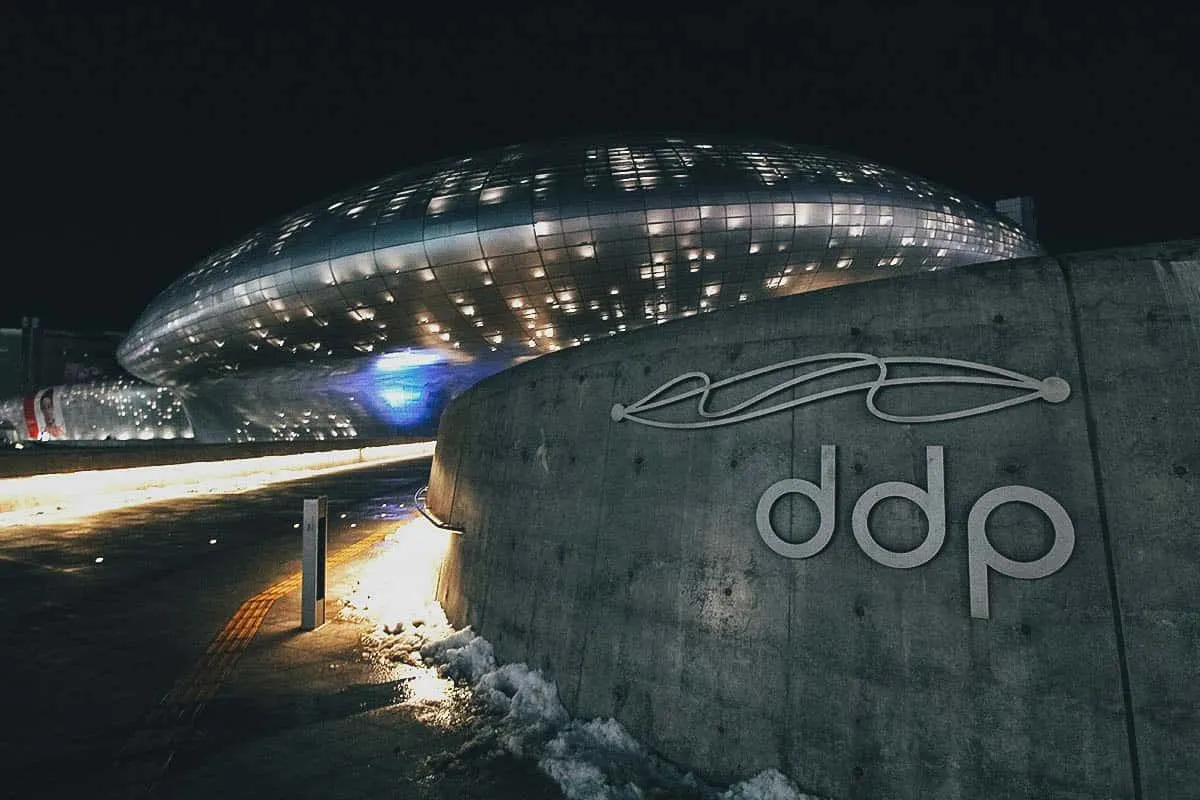
Operating Hours: 10AM-7PM, Tue-Sun (closed Mondays)
Admission: FREE
Closest Subway Station: Dongdaemun History & Culture Park Station (Line 2, 4 ,5 / Exit 1)
Estimated Time to Spend: About 2 hrs
ITAEWON
Among Seoul’s most popular neighborhoods, Itaewon is the one we’re least familiar with. It’s known for being one of the most culturally diverse neighborhoods in Seoul.
Itaewon refers to a lively commercial area in Seoul’s Yongsan-gu neighborhood, close to where American soldiers stayed after the Korean War. Over the years, it’s developed into an international destination with numerous bars, clubs, and restaurants offering a wide range of international cuisines.
Itaewon is a favorite hangout for expats and tourists in Seoul. If you like to party, then you may be interested in this pub crawl (Klook | Get Your Guide) that takes you to some of the best bars in Itaewon or Hongdae.
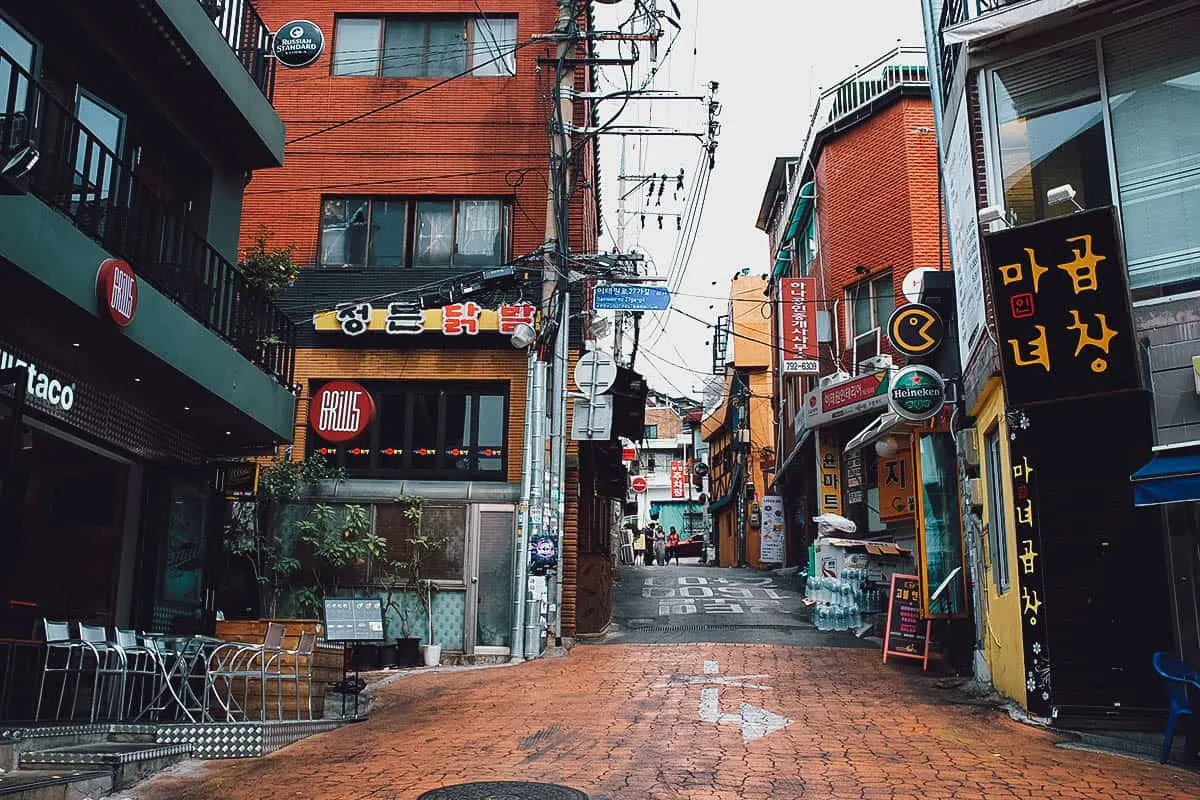
“Itaewon, Seoul” by Aleksandr Zykov, used under CC BY-SA 2.0 / Processed in Photoshop and Lightroom
Closest Subway Station: Itaewon Station (Line 6)
Estimated Time to Spend: About 3-4 hrs
Sigol Bapsang
We’ve only been to Itaewon once, ironically, to have dinner at this tiny old-fashioned Korean restaurant known for serving over 20 different types of banchan.
Banchan refers to those little plates of food served at the start of a Korean meal. They’re normally treated as just side dishes but at Sigol Bapsang, they’re the star.
For less than USD 15, you can enjoy a banchan feast with rice and a steaming bowl of jjigae (fermented soybean paste stew). Banchan is offered at almost every Korean restaurant but Sigol Bapsang is the only place we’ve been to in Seoul (or anywhere else) that serves it like this.
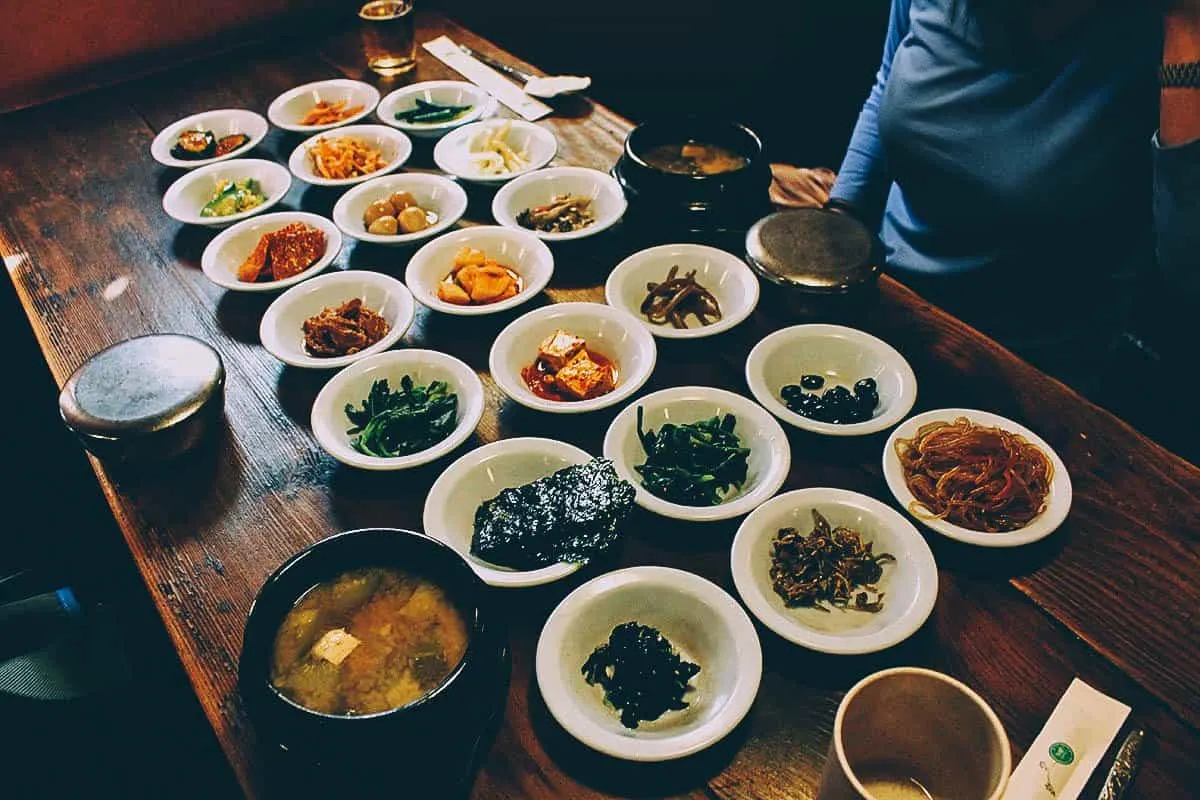
Address: 235 Itaewon-ro, Hannam-dong, Yongsan-gu, Seoul, South Korea
Operating Hours: 24 hrs
Closest Subway Station: Itaewon Station (Exit 2)
What to Order: Banchan
What We Paid: Around KRW 10,000-15,000 per person
Woosung Galbi
If you’re still hungry after Sigol Bapsang and don’t want to hang out in Itaewon, then you may be interested in having a Korean barbecue dinner at Woosung Galbi. It’s just a few stops away by Seoul metro at Yaksu Market.
Meat is expensive in Korea. You often have to shell out quite a bit of money to enjoy Korean barbecue. Thankfully, we found Woosung Galbi. It’s a no frills barbecue restaurant that offers just two things on their menu – pork galbi and pork rinds.
I read that Woosung Galbi is popular among locals and Seoul food bloggers. True enough, the place was packed with no other foreigners in sight. It’s a good place to enjoy simple but delicious pork barbecue at reasonable prices in Seoul.
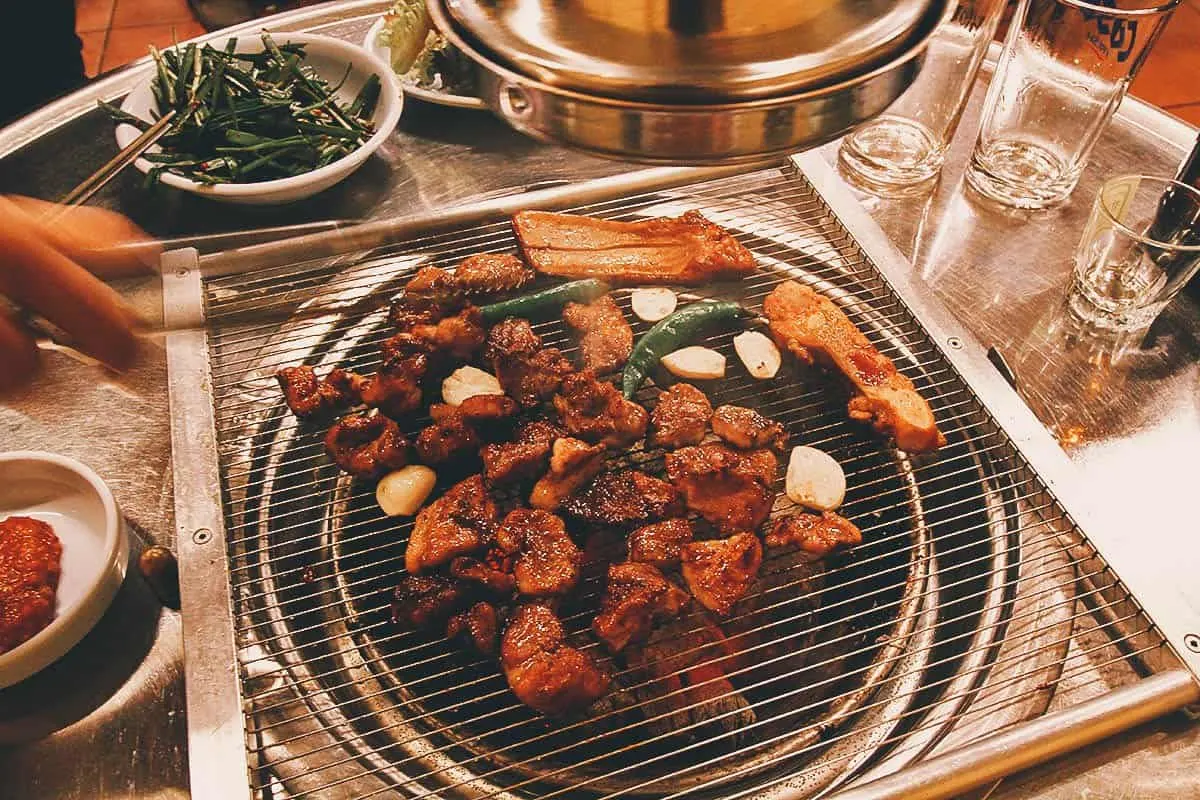
Address: 372-40 Sindang3-dong, Jung-gu, Seoul, South Korea
Operating Hours: 2PM-2AM, daily
Closest Subway Station: Yaksu Station (Exit 5)
What to Order: Pork galbi, pork rinds
What We Paid: Around KRW 15,000-20,000 per person
SEOUL ITINERARY: DAY 5
This itinerary for Seoul recommends that you spend your first four days visiting the city’s top cultural attractions and its most popular neighborhoods. On your fifth and final day, I recommend exploring beyond the city and going on a day trip from Seoul.
Nami Island (pictured below), the DMZ (border barrier with North Korea), and Everland theme park are among the most popular destinations, but for more suggestions, be sure to check out our article on some of the best day trips you can make from Seoul.
Of these day trips from Seoul, I found the DMZ tour to be especially fascinating. It gives you an inside look at the history and tension between North and South Korea.
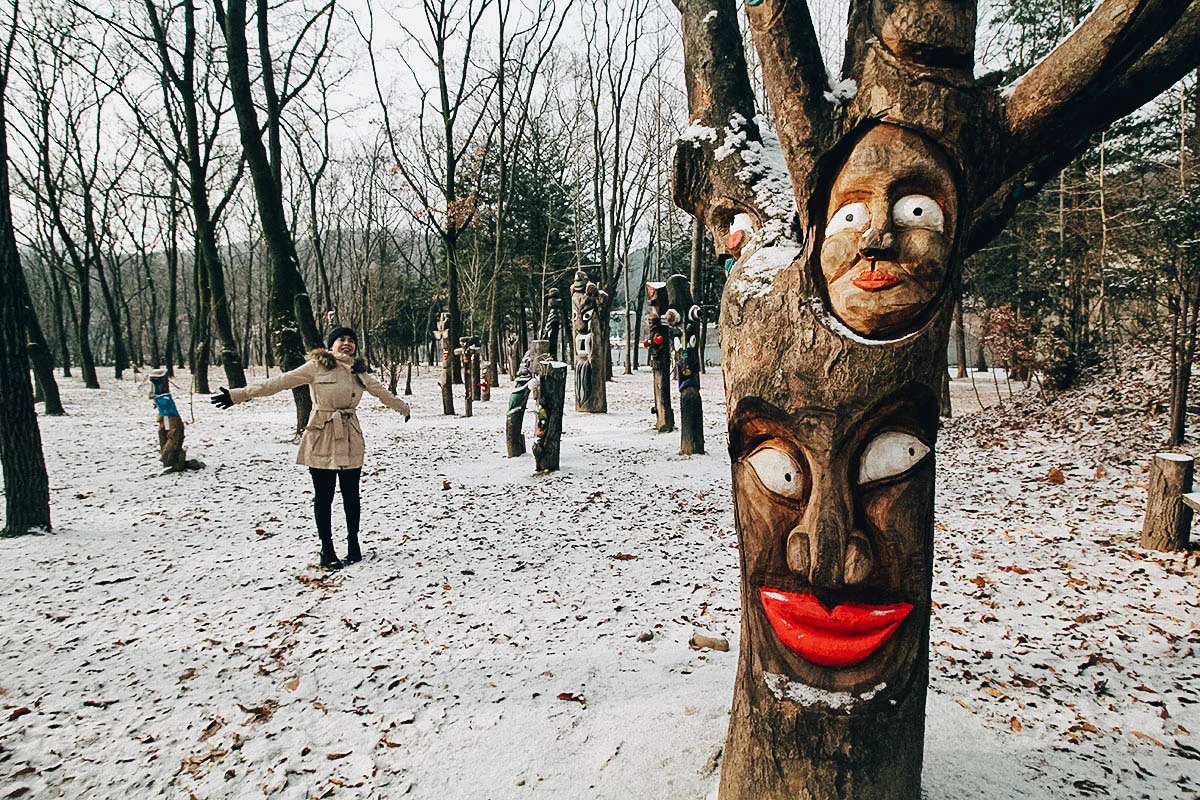
SEOUL ITINERARY MAP
To help you understand where the attractions in this Seoul itinerary are in relation to one another, I’ve pinned them all on a map (the red pin is Seoul Station). Click on the link to open a live version of the map in a new window.
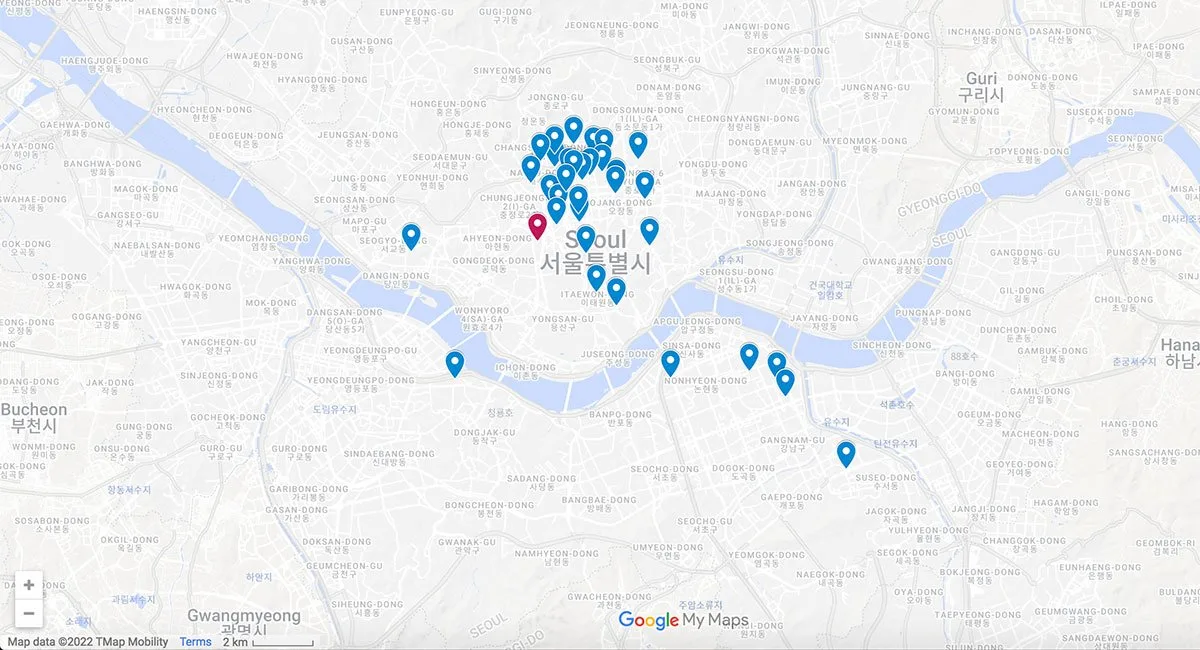
FINAL THOUGHTS ON THIS ITINERARY FOR SEOUL
There’s much to see and do in Seoul so first-time visitors will have their hands full navigating this massive city. But if you plan your trip well, then 4 or 5 days in Seoul should give you enough time to see the city’s top tourist attractions.
As described at the top of this Seoul itinerary, the city’s metro system is extensive and efficient so it should be all you need to get around Seoul. You’ll be riding the subway a lot so it’s a good idea to invest in a T-money card. It’s a transportation card that saves you KRW 100 per journey and eliminates the hassle of having to buy single journey tickets every time.
You can purchase a T-money card at convenience stores and most Seoul metro stations. If you’d like to purchase one in advance, then you can get a mobile app version for foreigners called the Korea Tour Card or get it as part of the Discover Seoul Pass.
No matter how you get it, the T-money card is a huge timesaver. It’ll be very helpful to you when you visit the attractions on this Seoul itinerary.
Anyway, I hope you found this 5 day Seoul itinerary useful. If you have any questions, then feel free to let us know in the comments below. Thanks for reading and I hope you have the best time when you visit South Korea and Seoul!
Disclosure
Some of the links in this itinerary for Seoul are affiliate links, meaning we’ll get a small commission if you make a booking or purchase at no extra cost to you. As always, we only recommend products and services that we use ourselves. We truly appreciate your support as it helps us make more of these free travel guides. Thank you!


Hazel
Monday 11th of March 2024
Hi, came across your blog as I was looking for things to do in S. Korea this coming June. I was feeling overwhelmed with all the info on the web but found your blog so super helpful. Thank you for posting such great information!
JB & Renée
Thursday 11th of April 2024
Happy you found it useful Hazel!
Sasha
Sunday 6th of November 2022
Hi, may I know which month did you visit and how are the streets of myeondong? thank you!
vincent liptrot
Thursday 13th of July 2023
@Sasha, Myeongdong is very much back to pre covid energy levels but the shops are still catching up. By that I mean there are still some empty spaces where shops have closed dow. It is still worth the visit, especially the food night market on the main street and neighboring "hip-jiro" at night is fun for bars and pubs. I am sure you will want to see all the surrounding areas! "We Ride E-Bike Tours" office is just one block from Myeongdong. They will give you a 2.5 hour tour that will give you a good idea of the district and save you lots of energy researching, walking around and (maybe) getting lost! Anyone can do the tour, the e-function makes it easy and there is a rickshaw if you can't ride a bike! They travel at human pace and in all the quiet pretty back streets, you will love it! Have a wonderful time in Korea!
JB & Renée
Wednesday 9th of November 2022
Hi Sasha, we haven't been back to Seoul since the pandemic so I unfortunately can't speak on the current state of the Myeongdong area. An Airbnb host we know has been sounding pretty upbeat so I expect it to be back (or close) to its pre-pandemic energy levels.
lina
Tuesday 18th of October 2022
Thanks for this post! It really is so helpful.
JB & Renée
Friday 21st of October 2022
Happy to help Lina! Enjoy Seoul!
Samantha
Thursday 26th of May 2022
Hi, just wanted to say you really helped me a lot in my itinerary planning! Thanks a lot!
JB & Renée
Monday 6th of June 2022
Happy to help Samantha! Have a fantastic time in Korea.
Martin
Tuesday 1st of September 2020
Great guide! Loved reading it. For just a moment I was in Korea. I would love to go. Since watching some wonderful Korean TV shows I've become more interested in Korea.
JB & Renée
Thursday 3rd of September 2020
Thanks Martin! We definitely understand the fascination with Korean dramas. My wife is the same way! :)